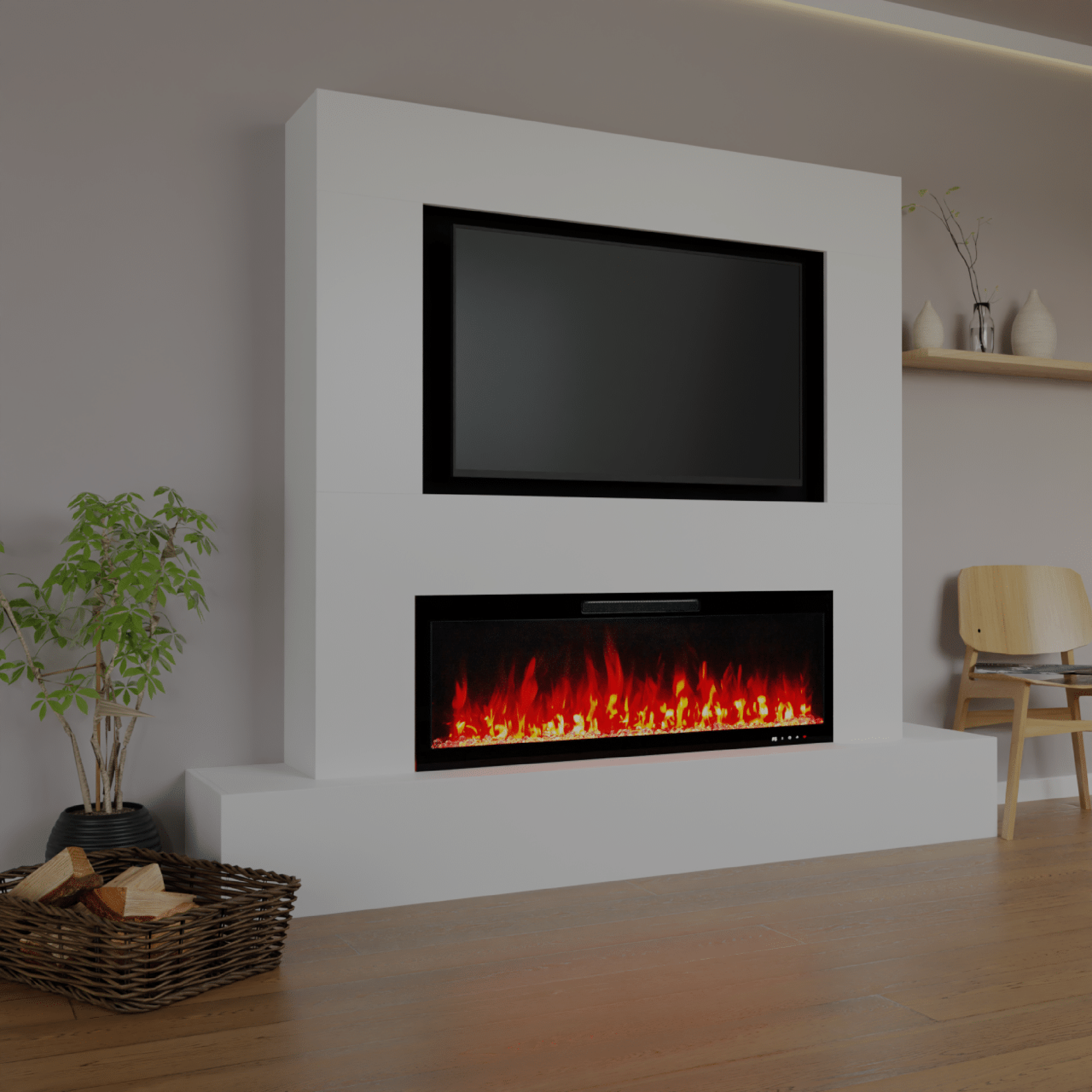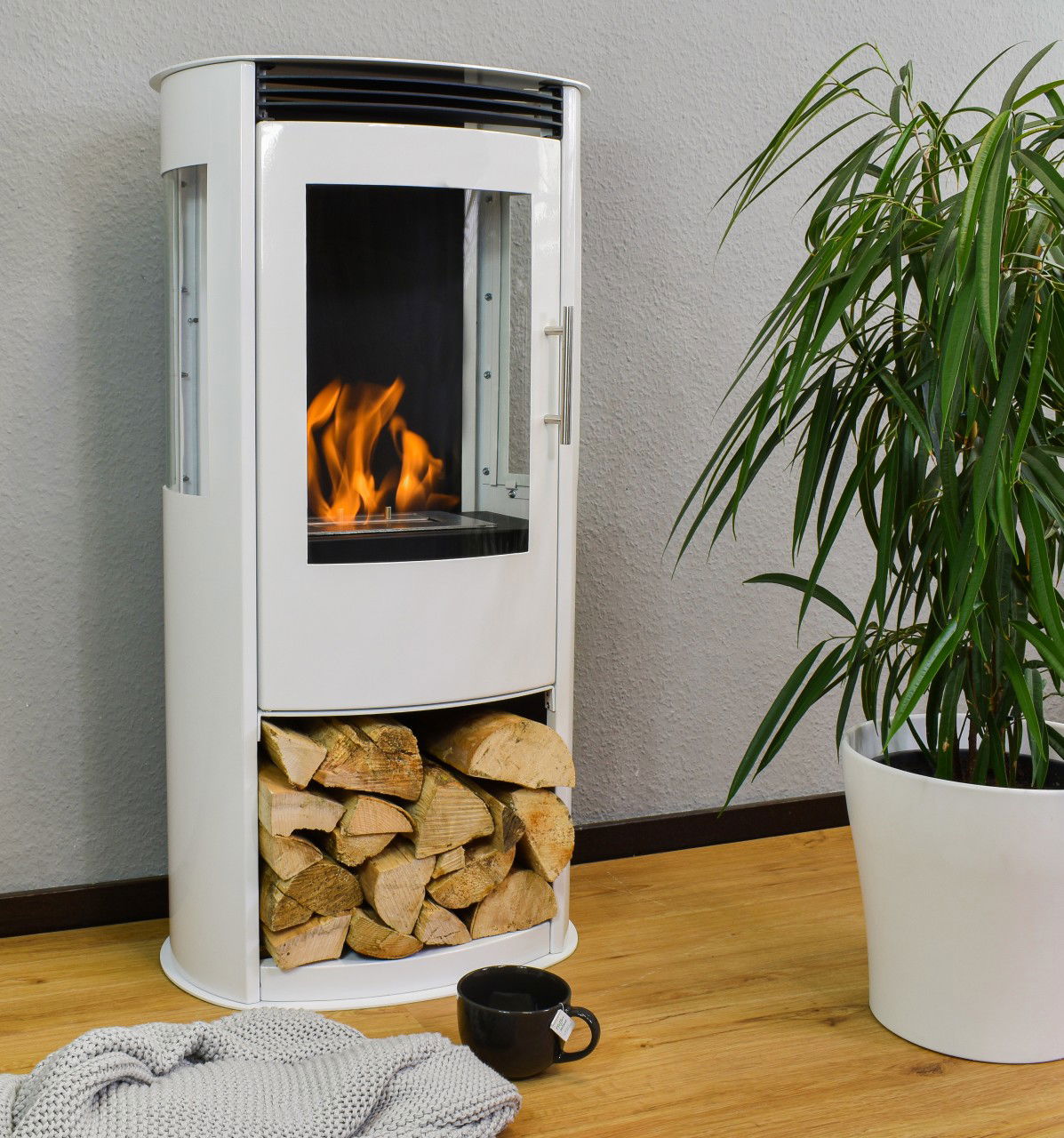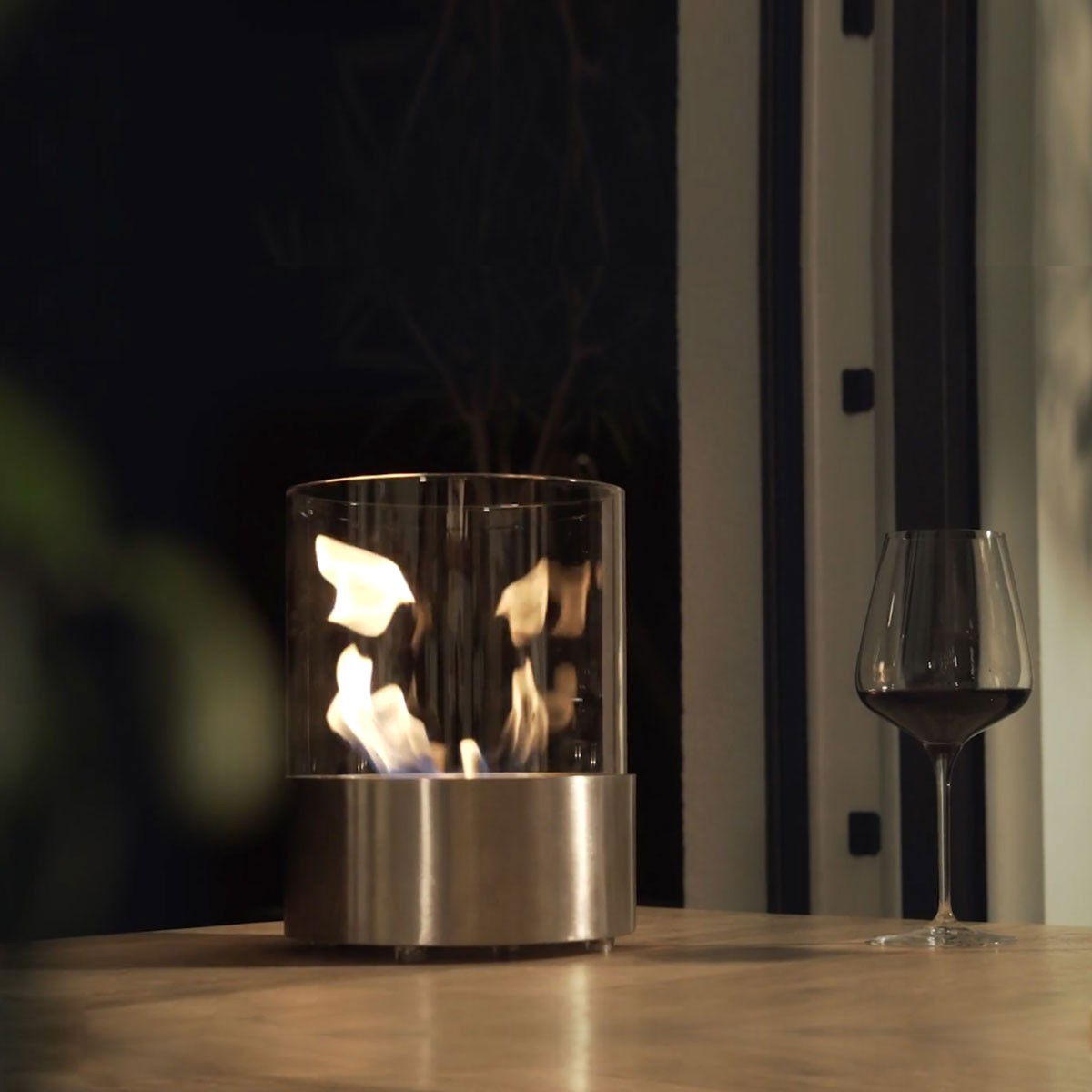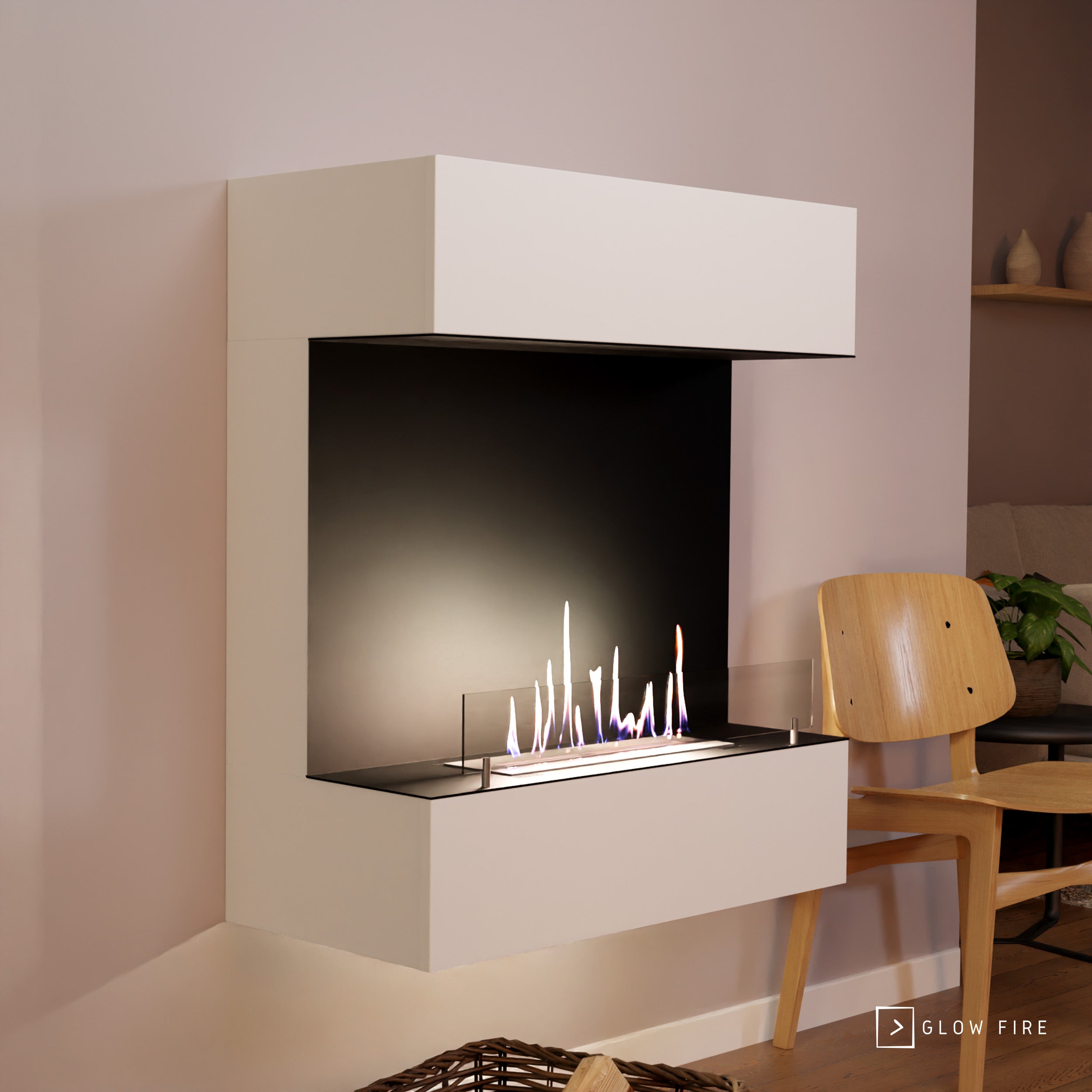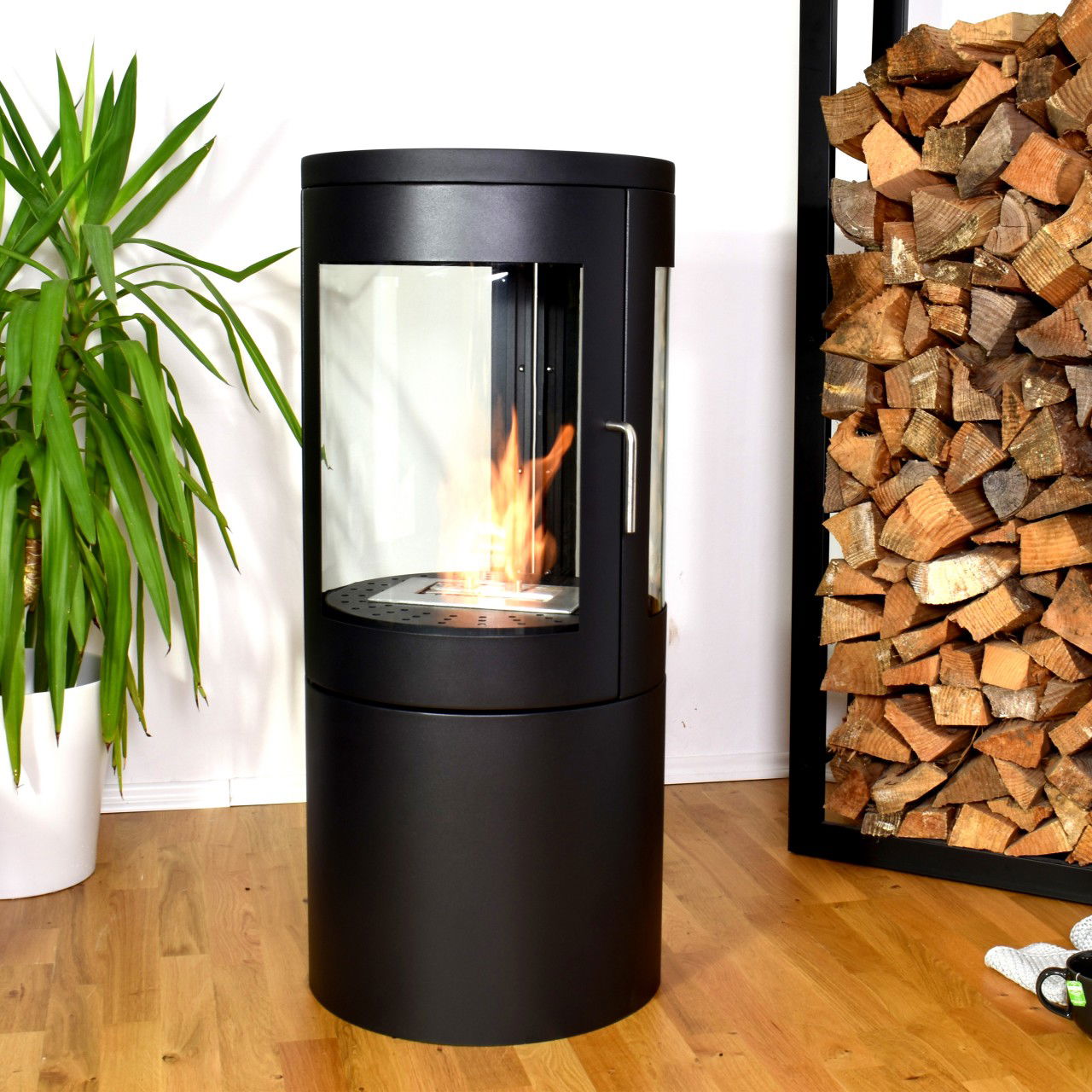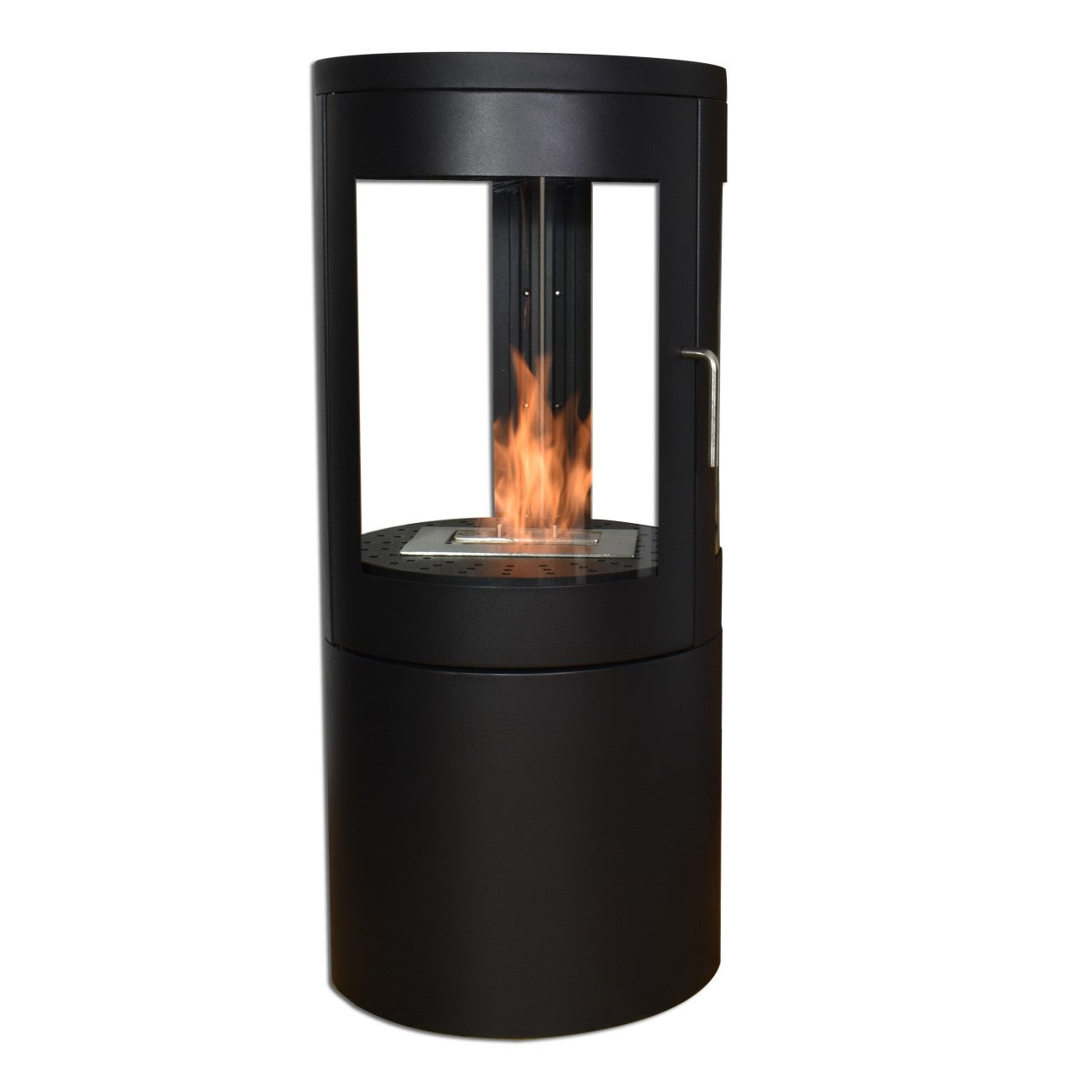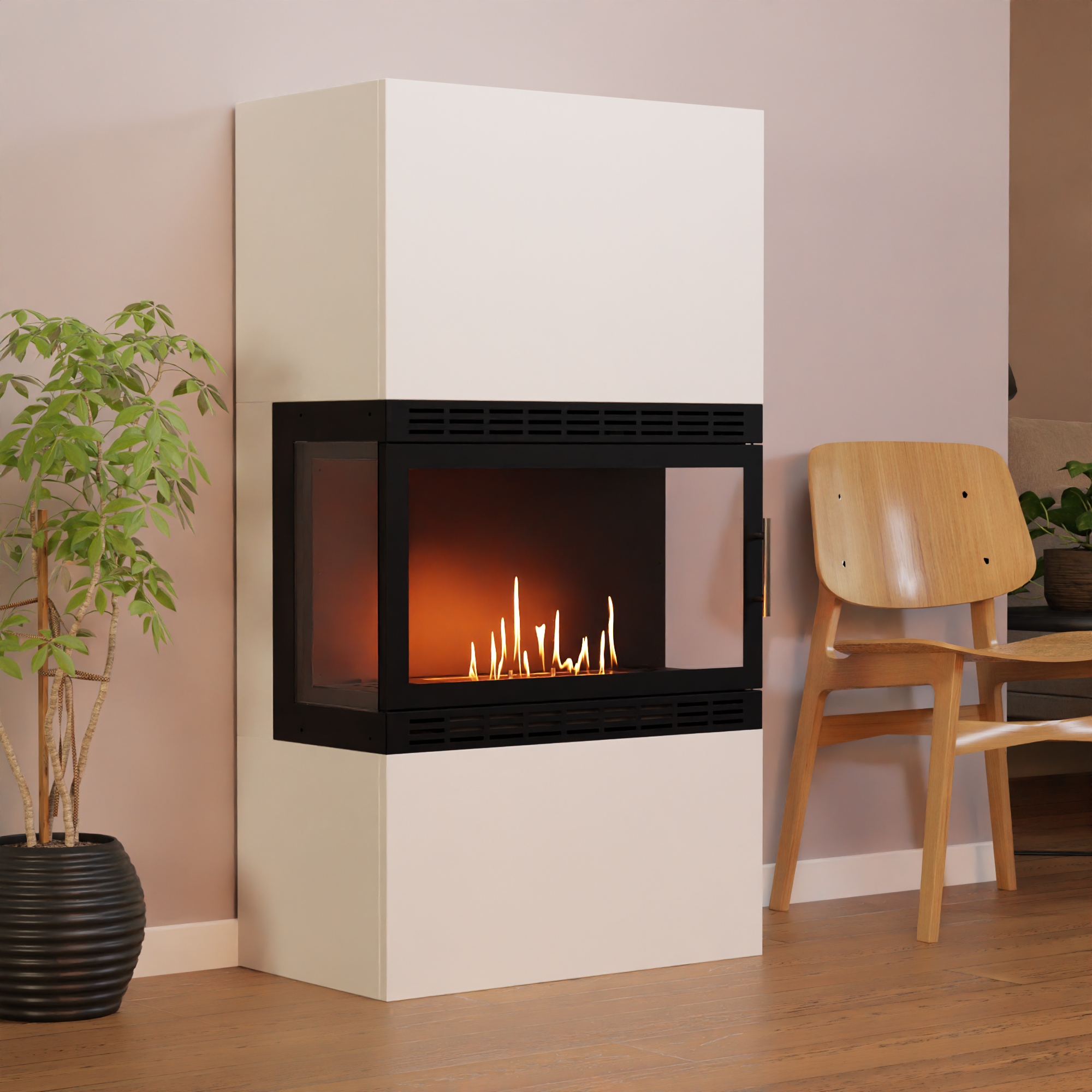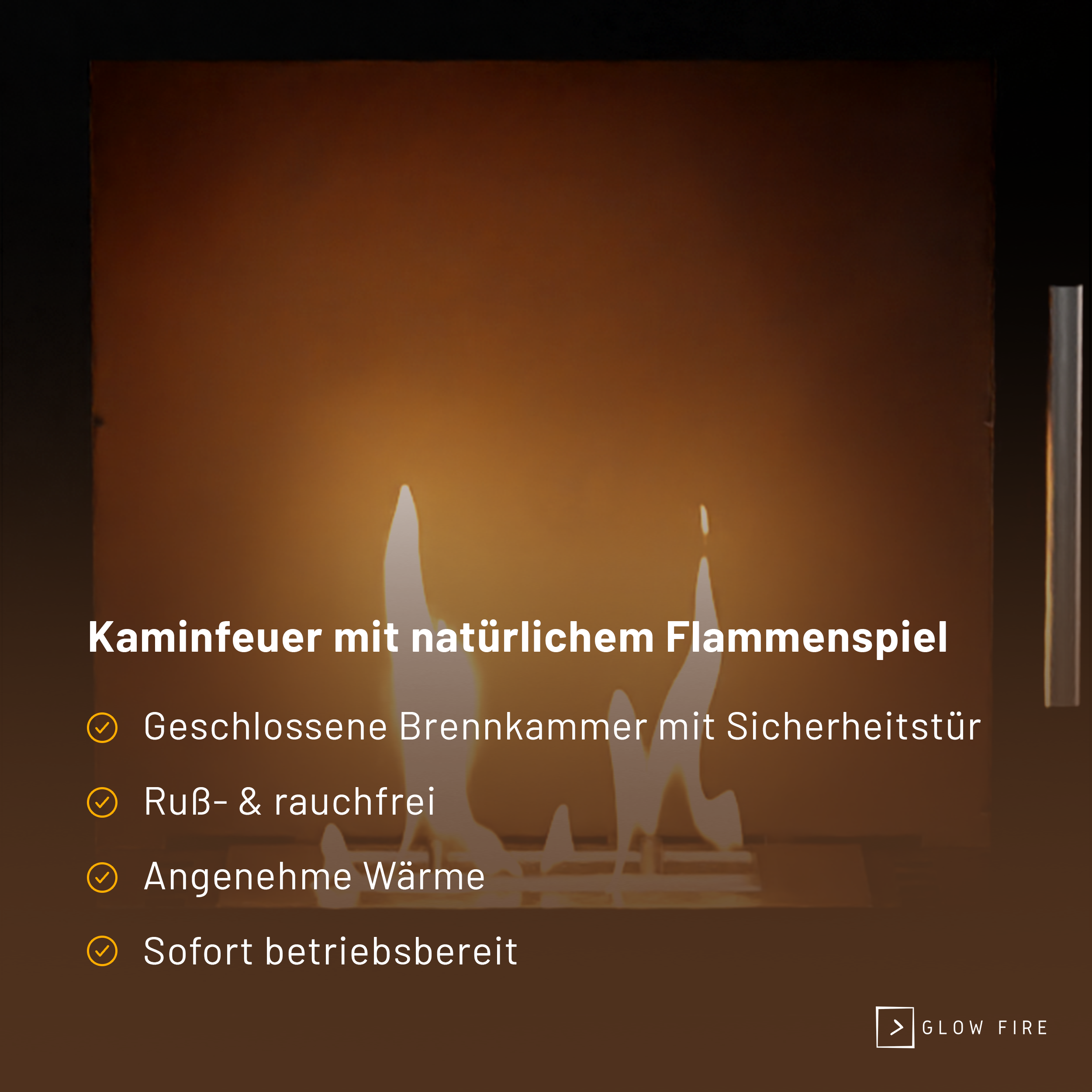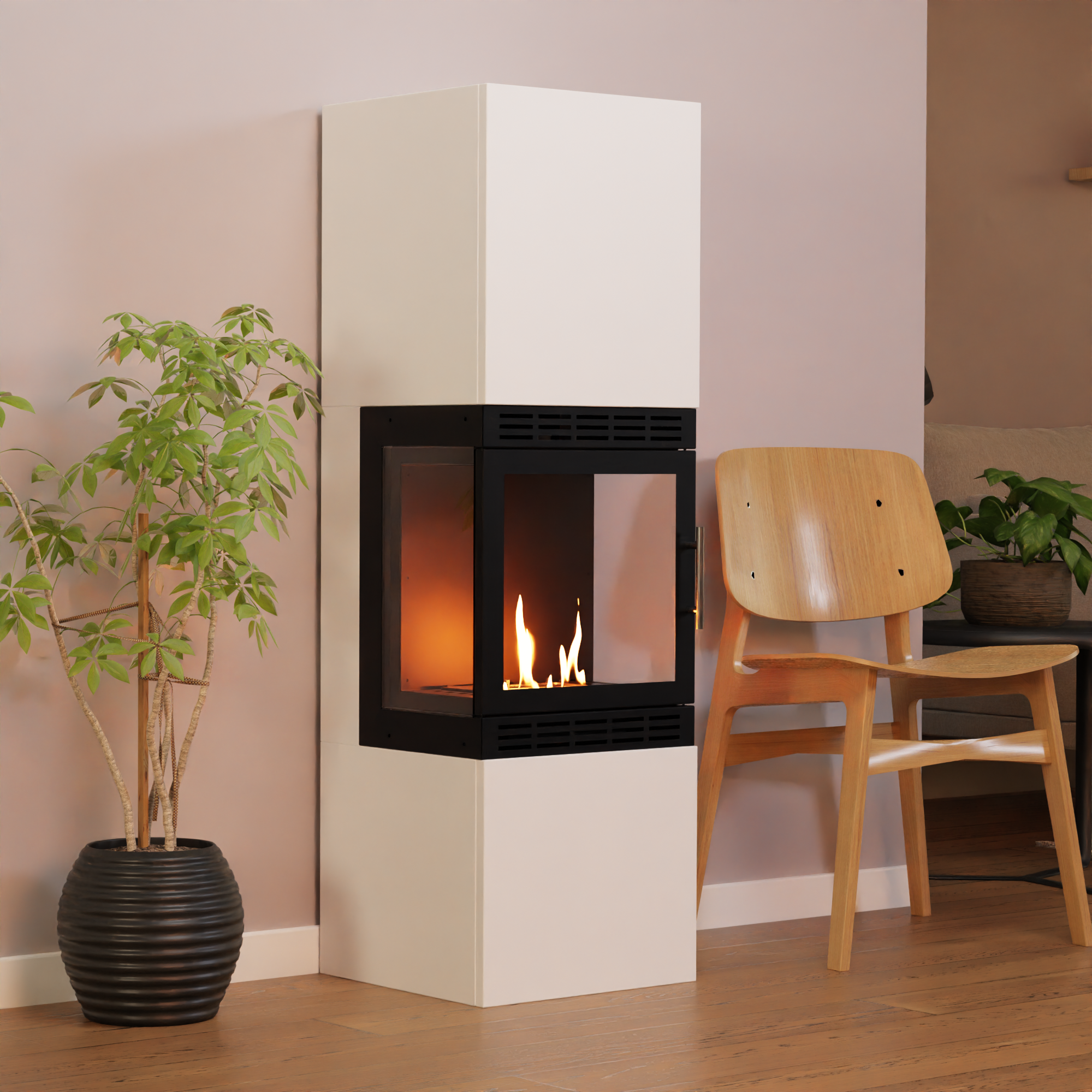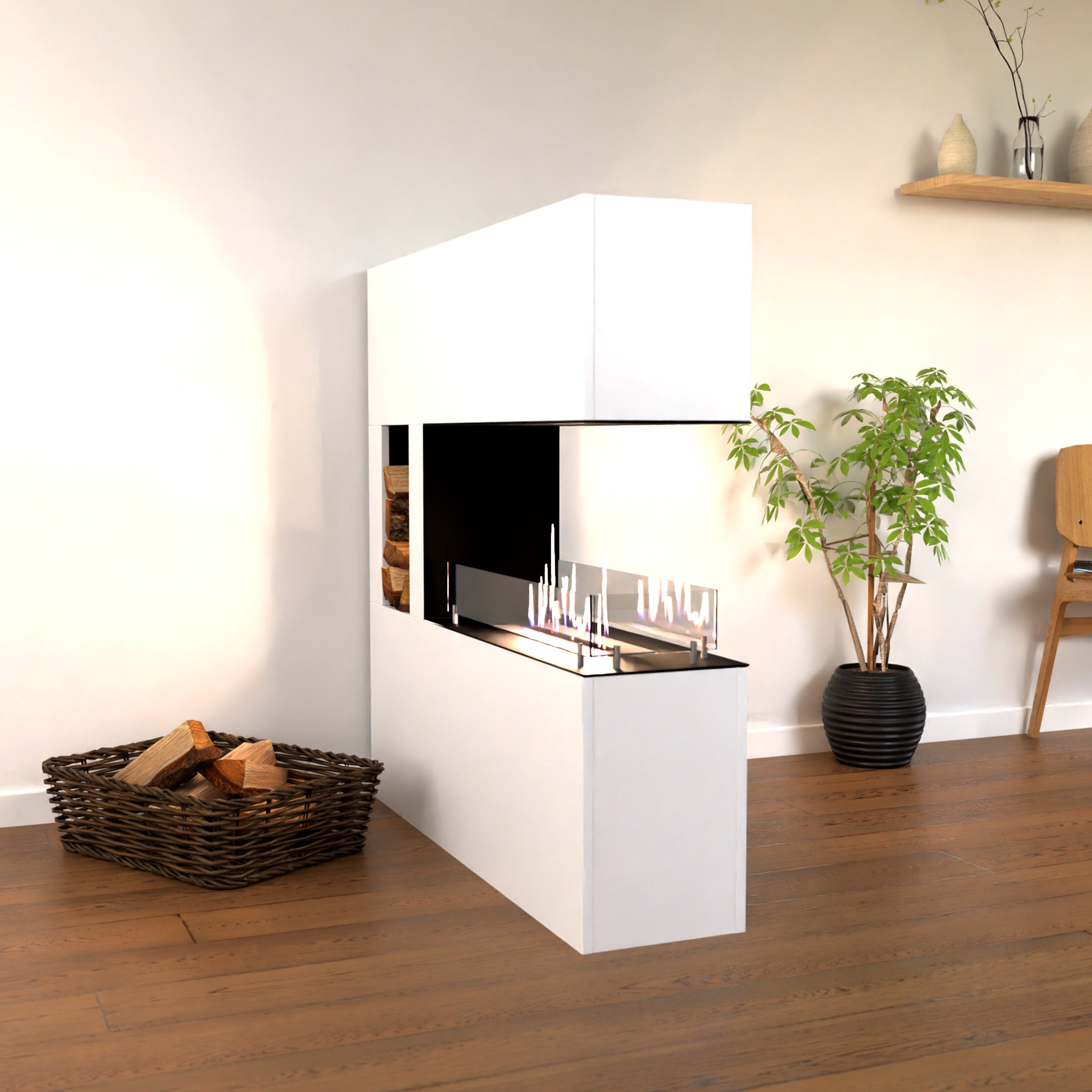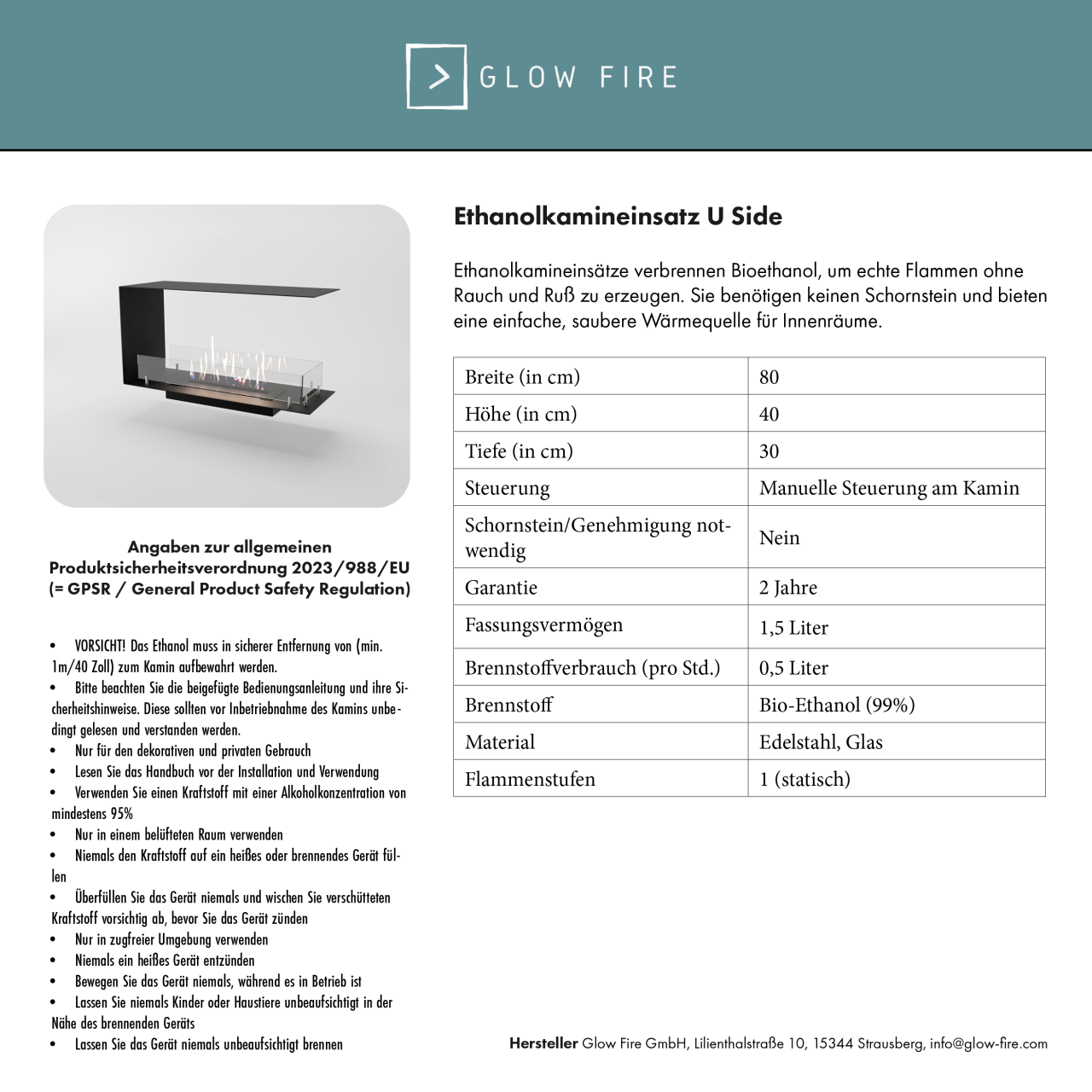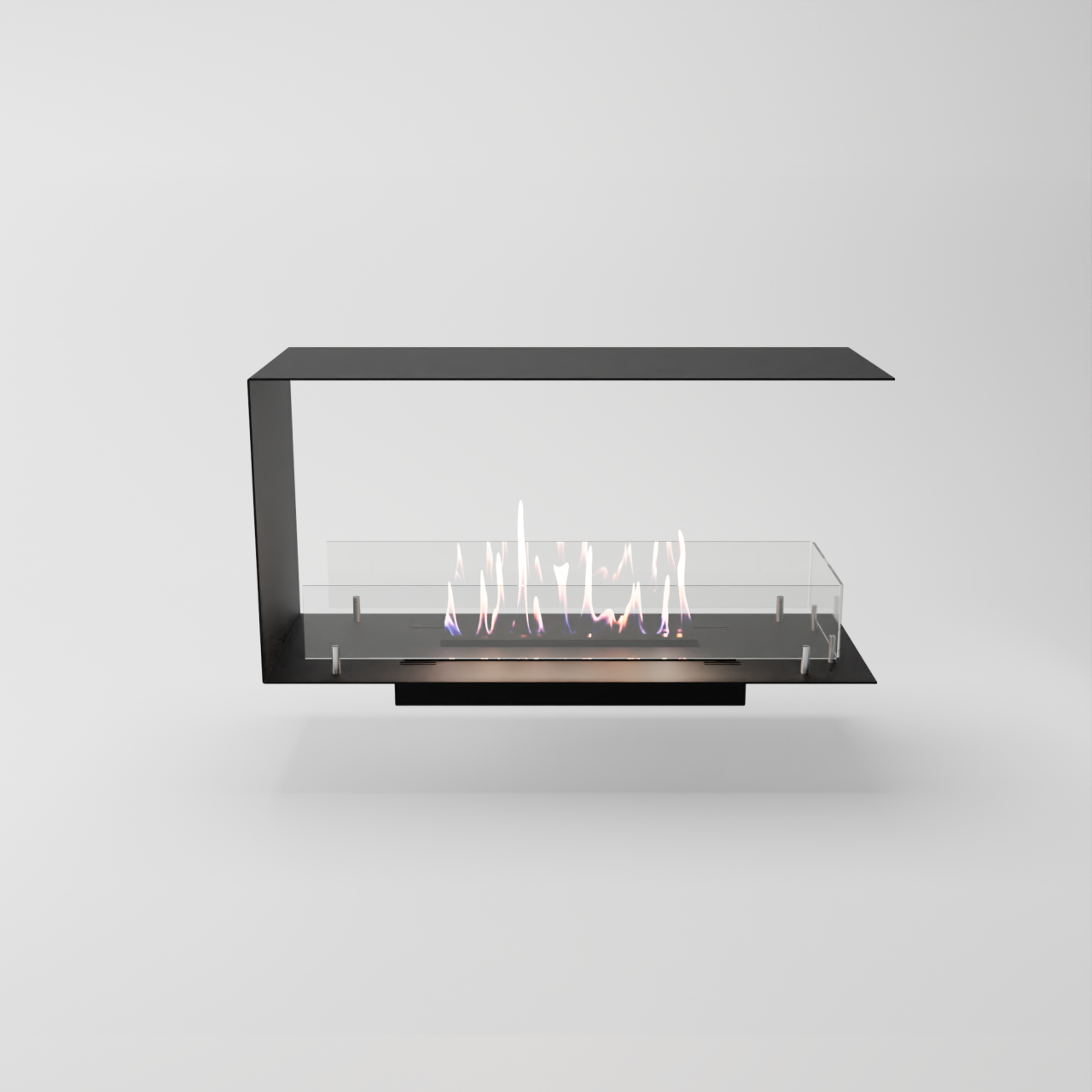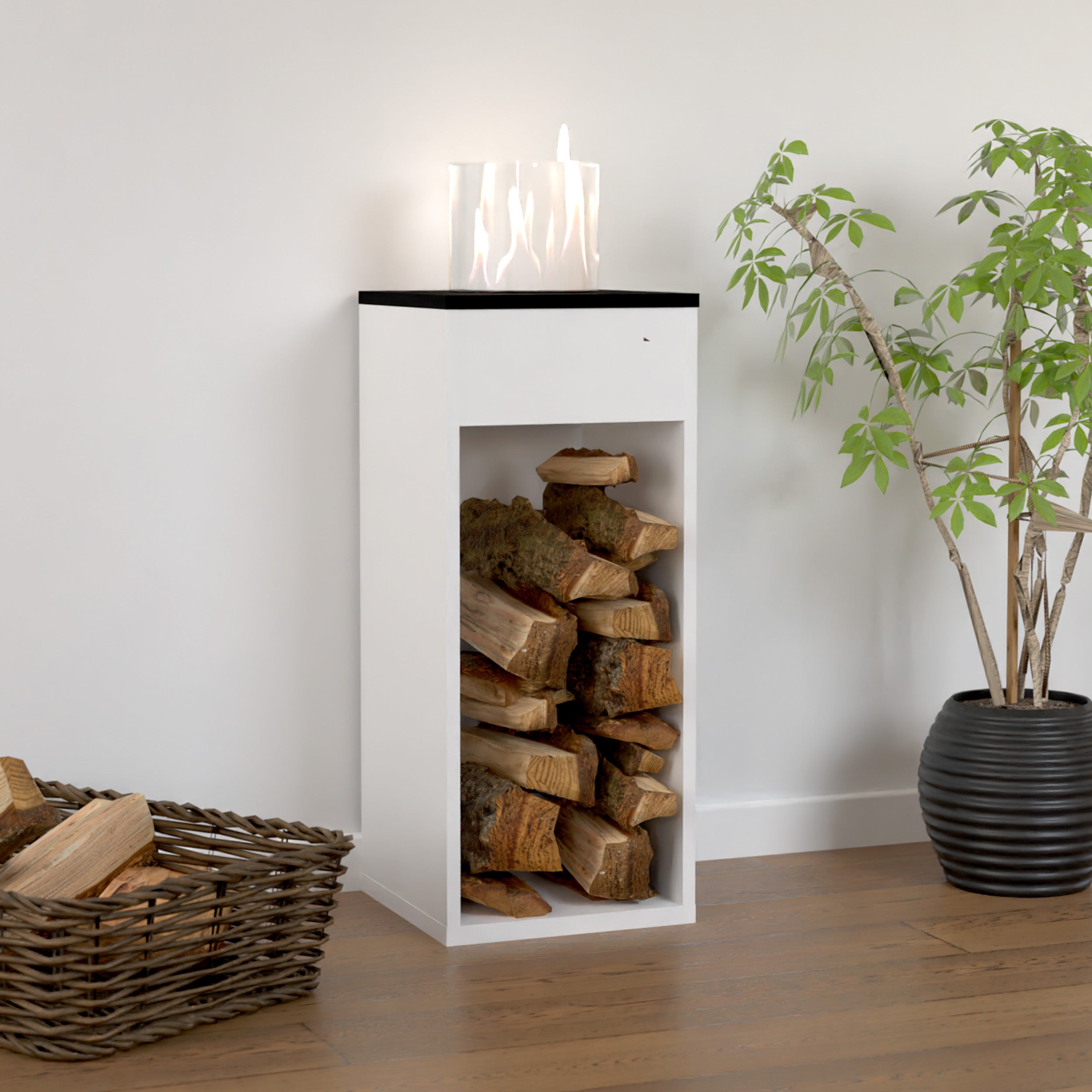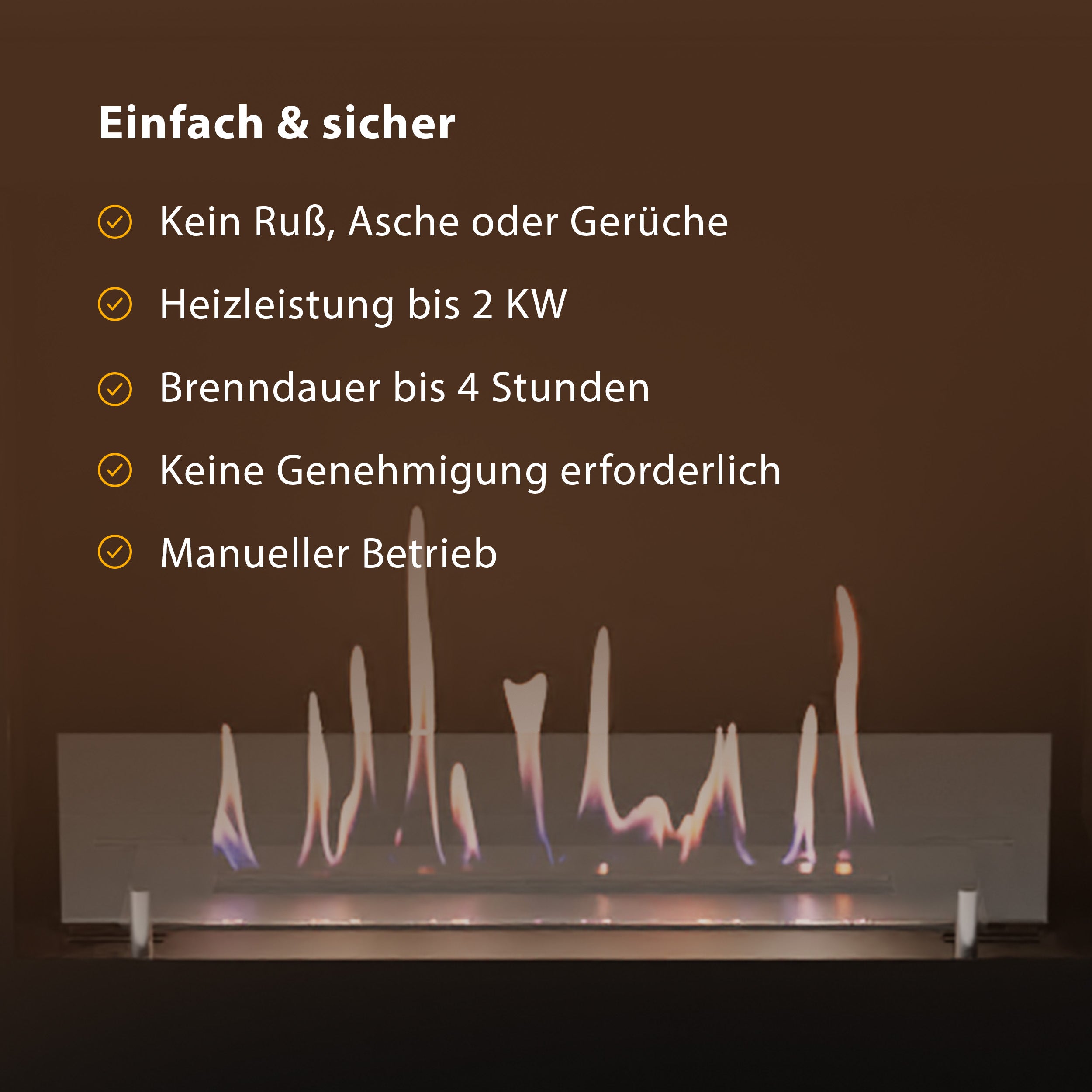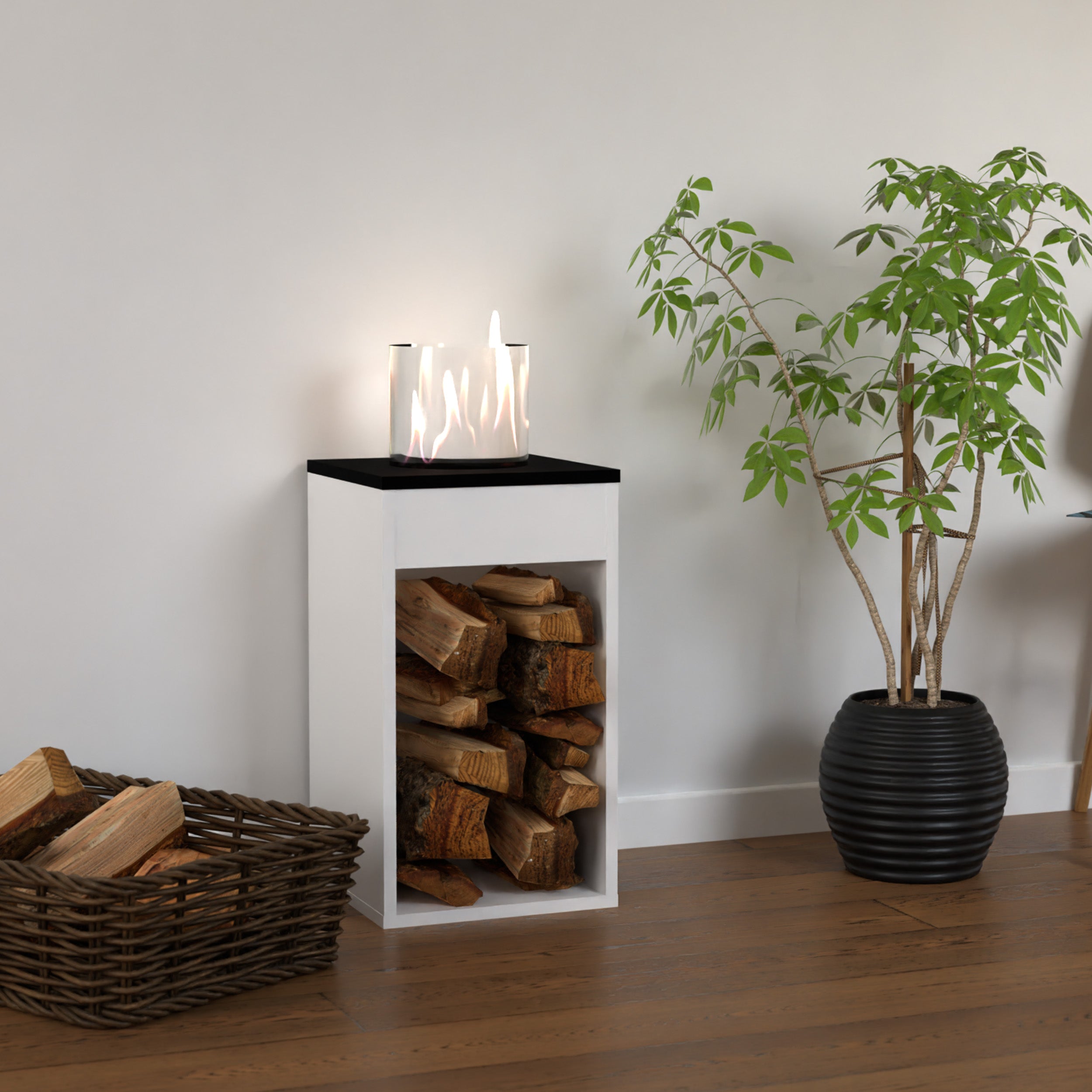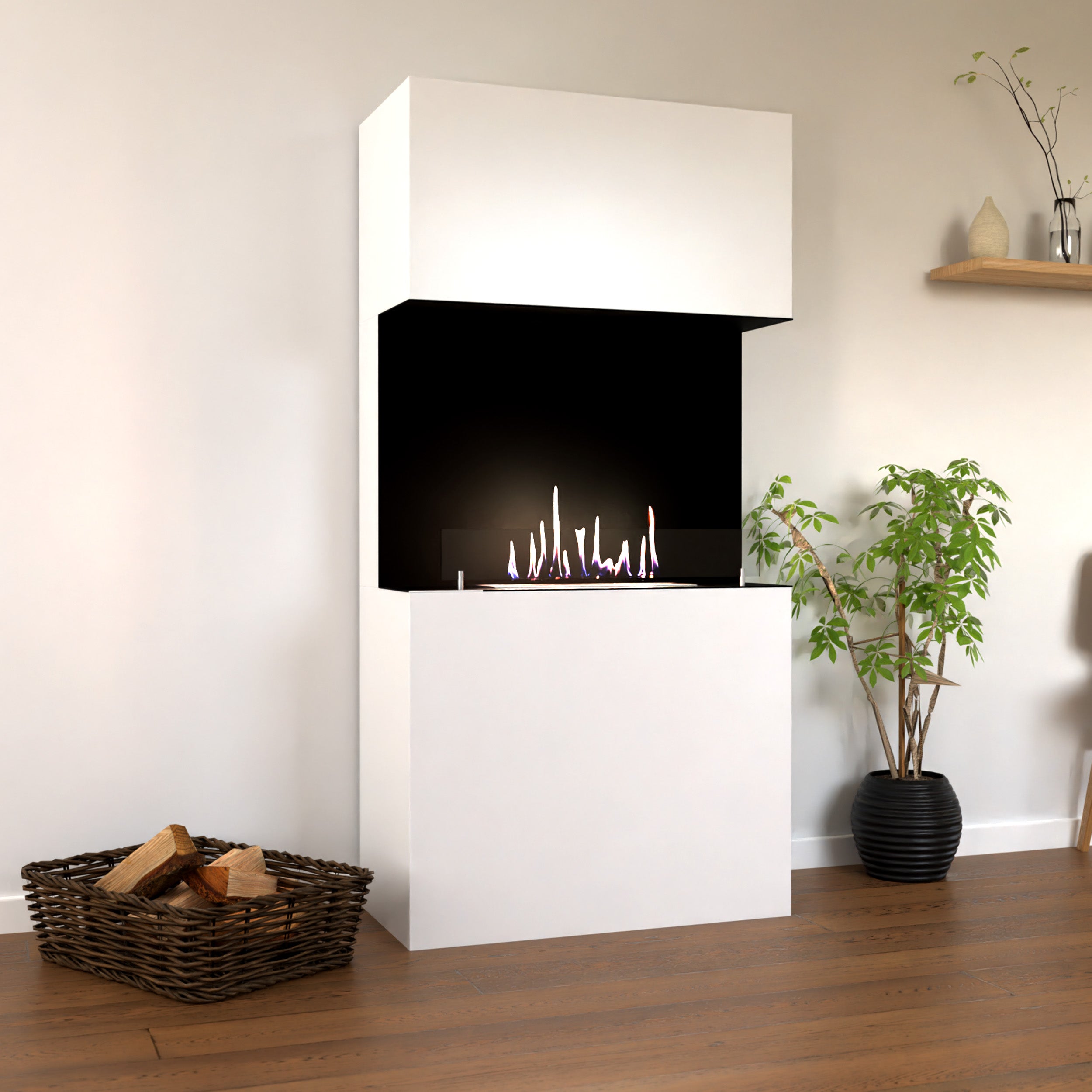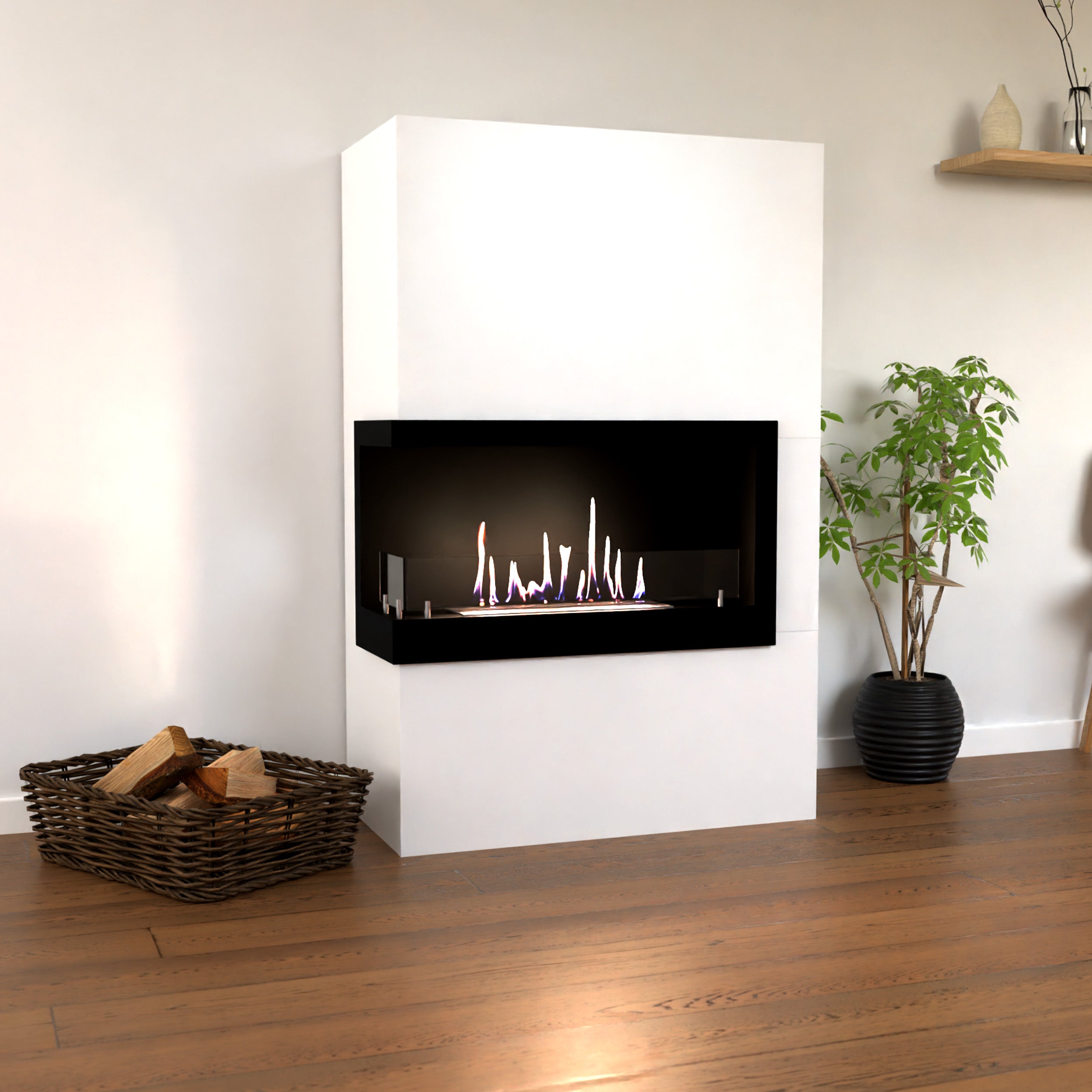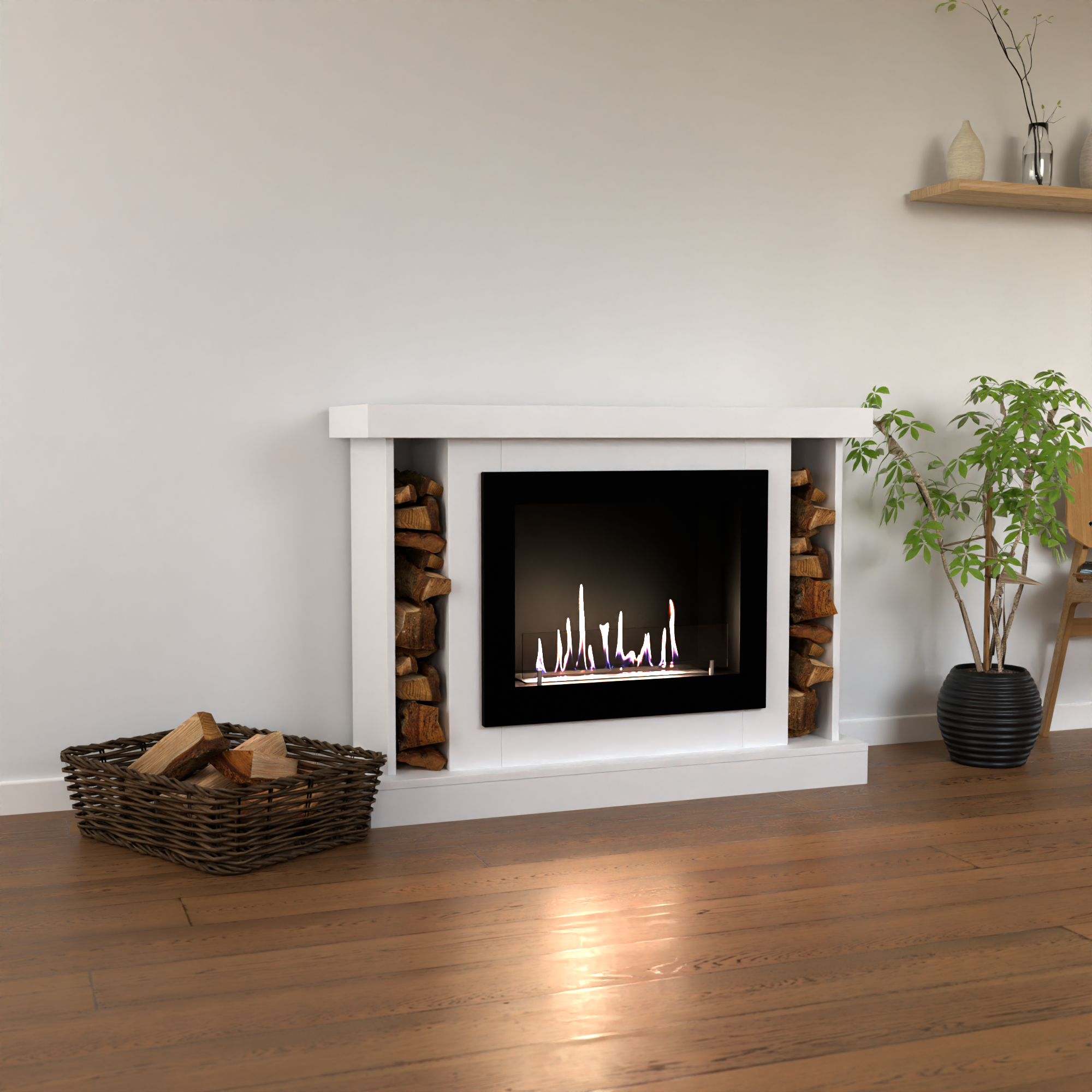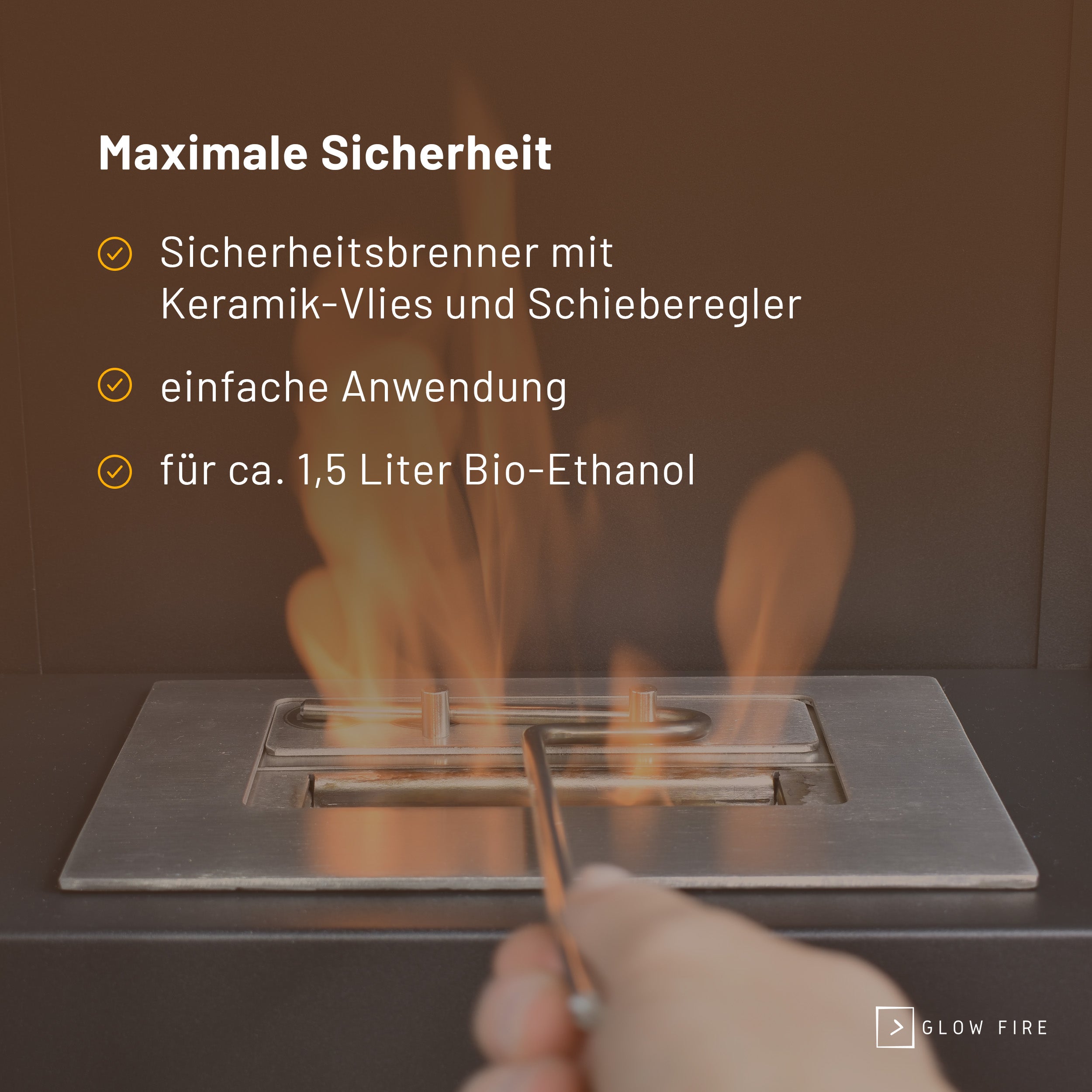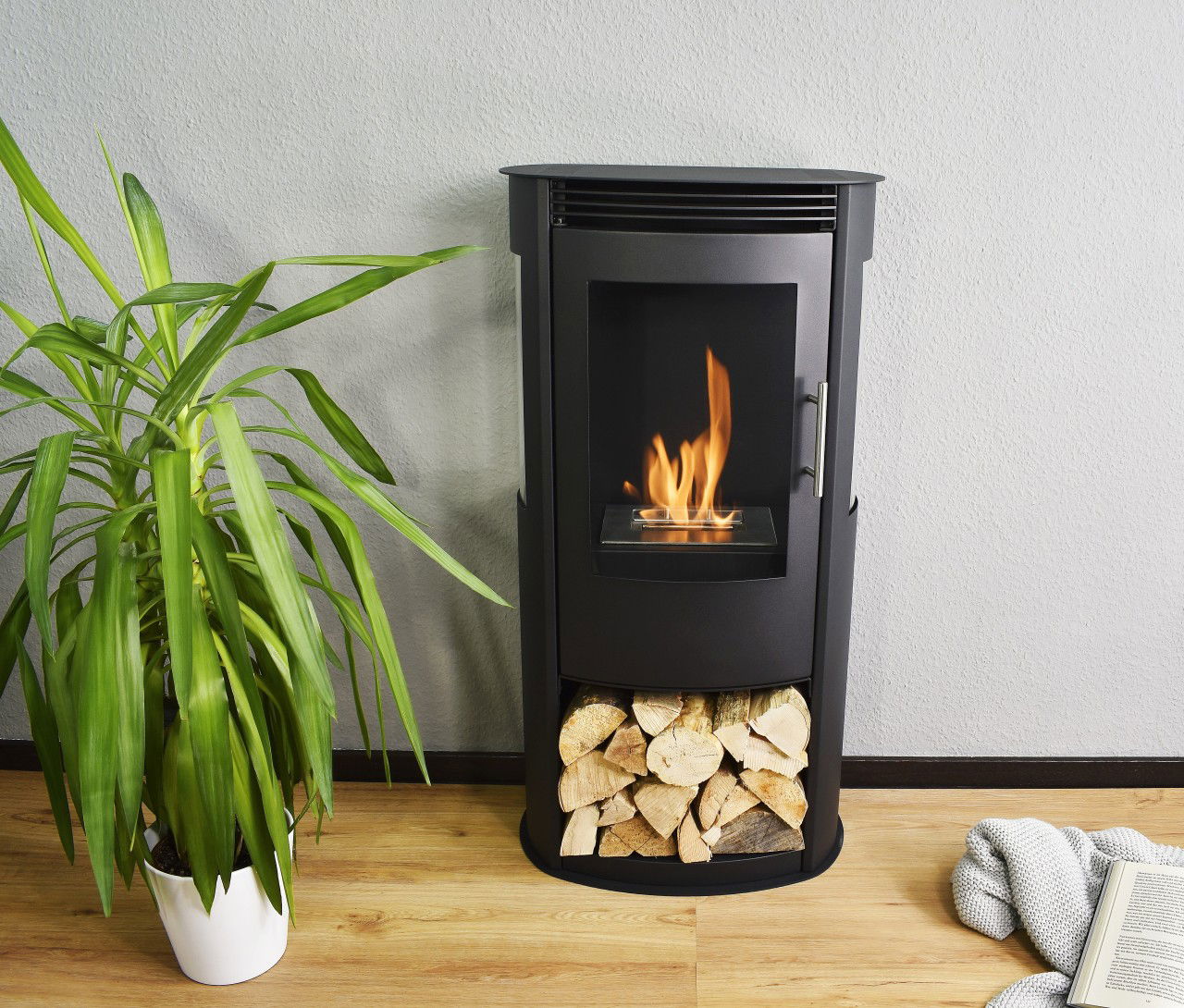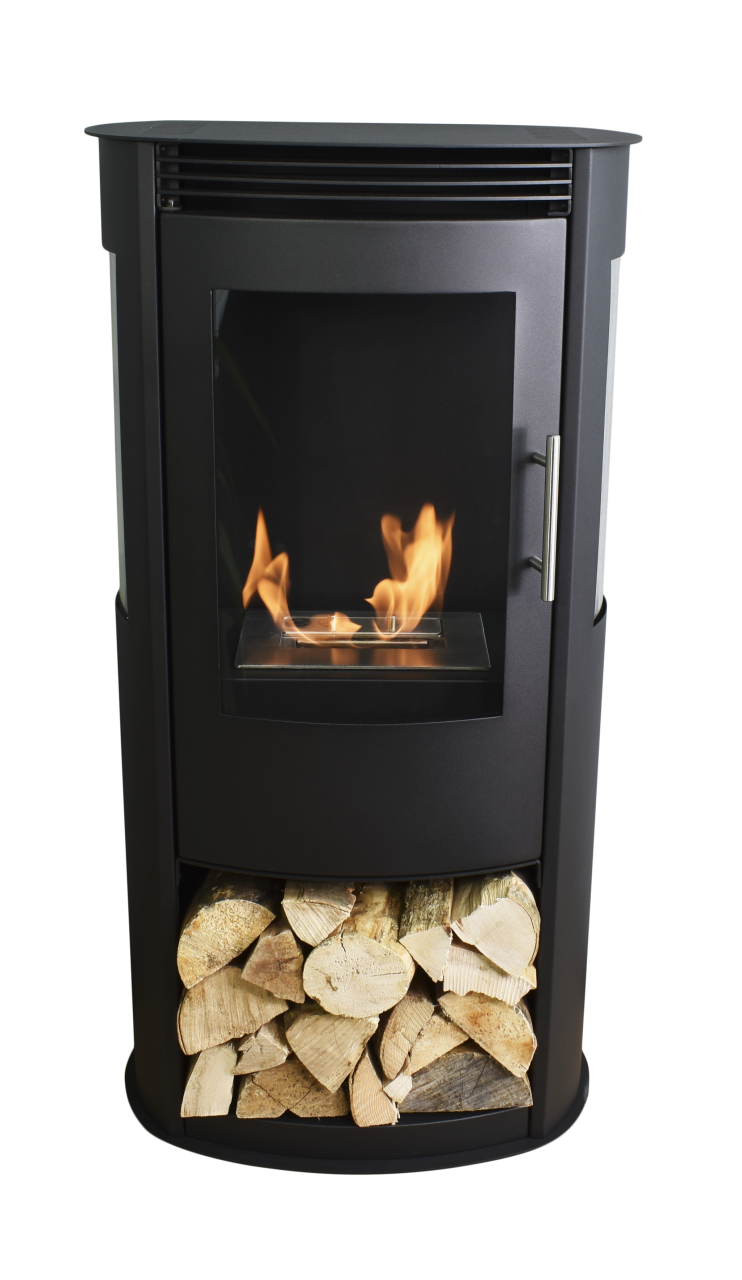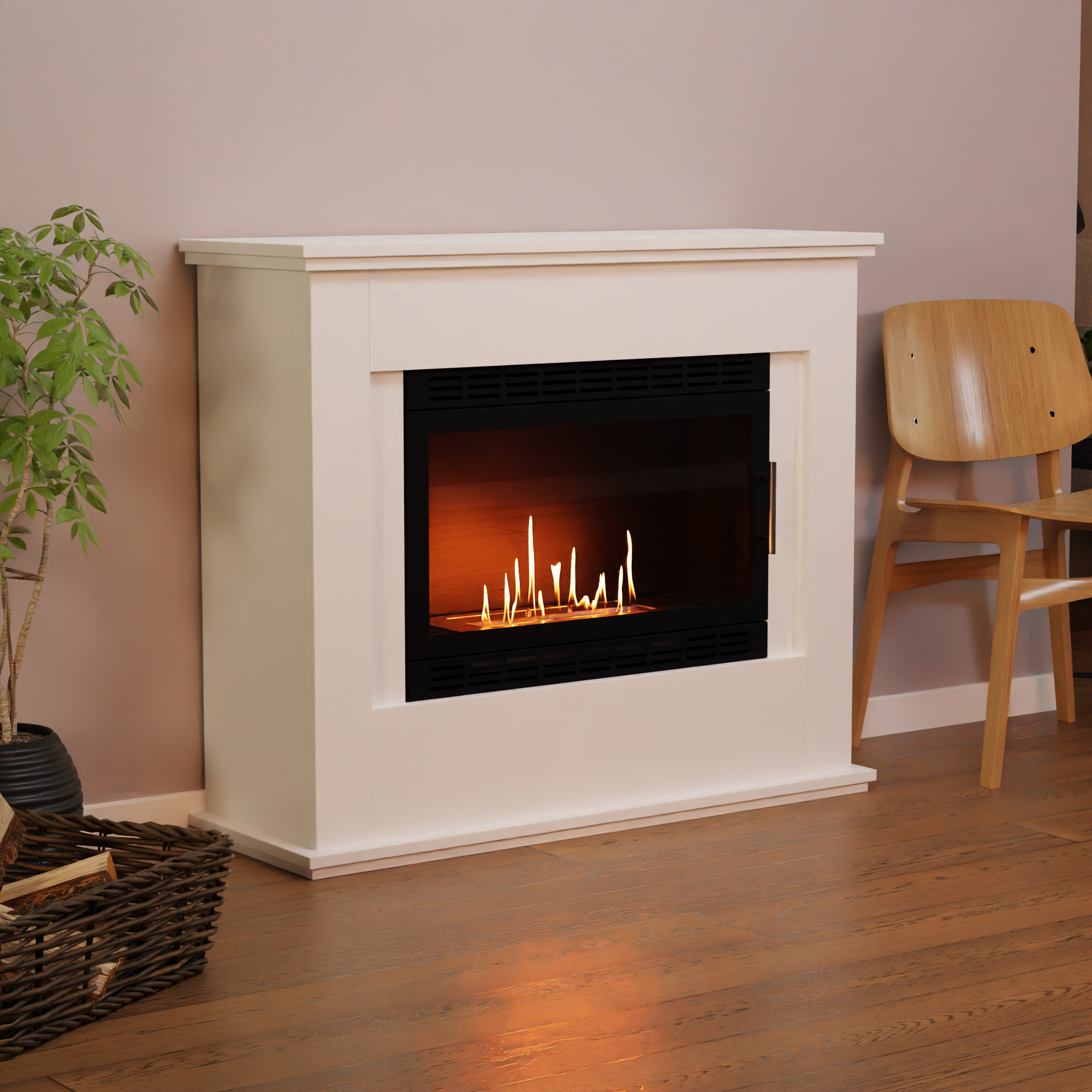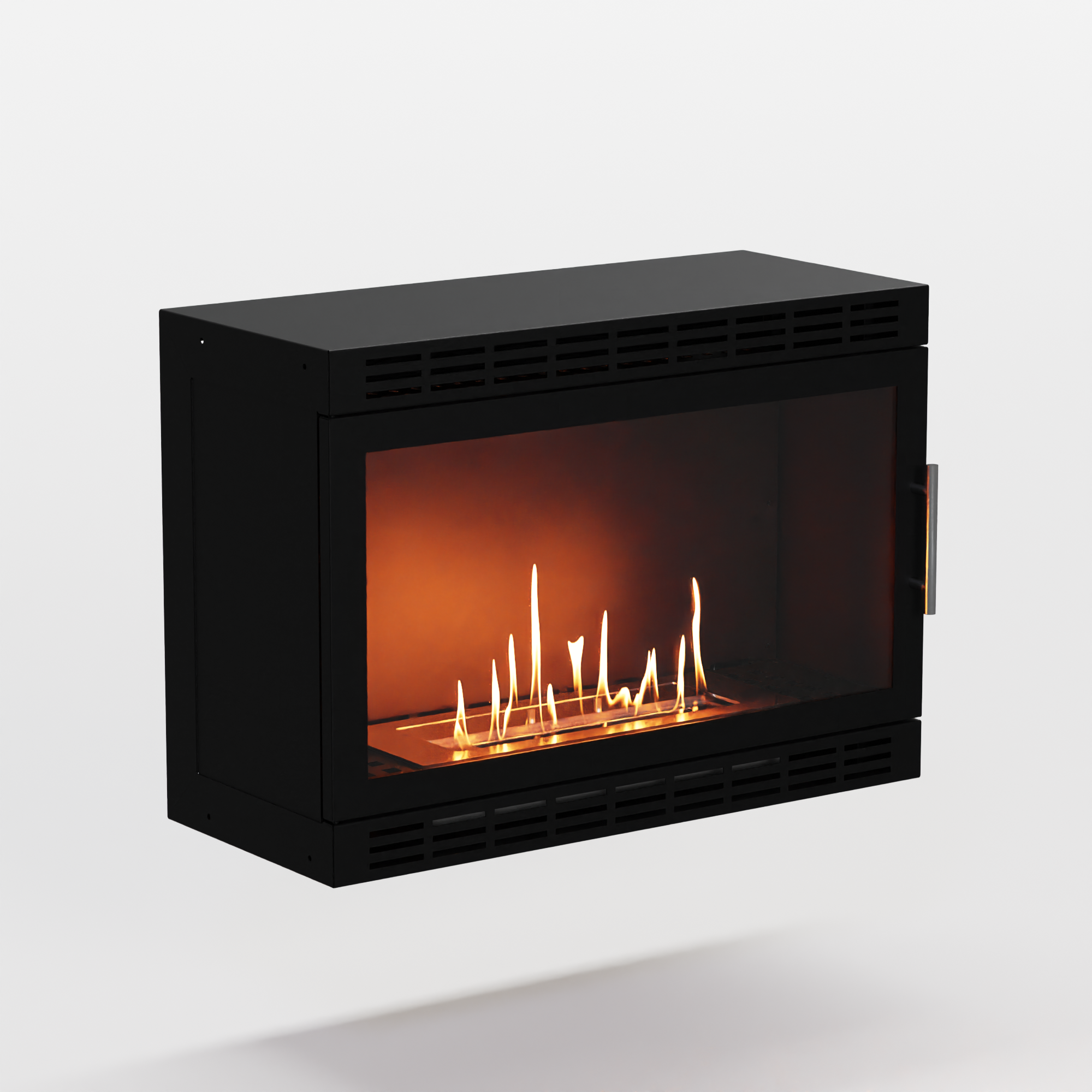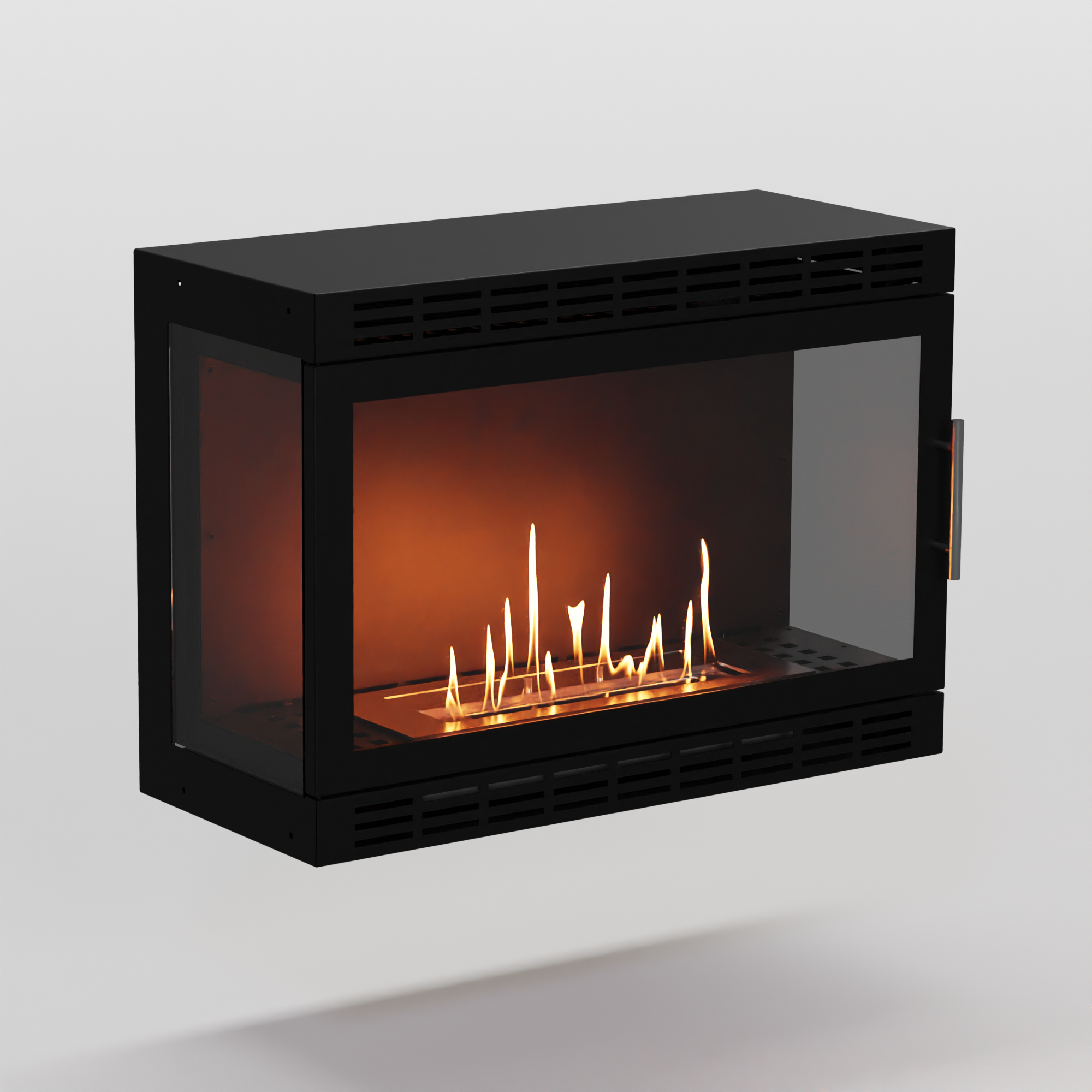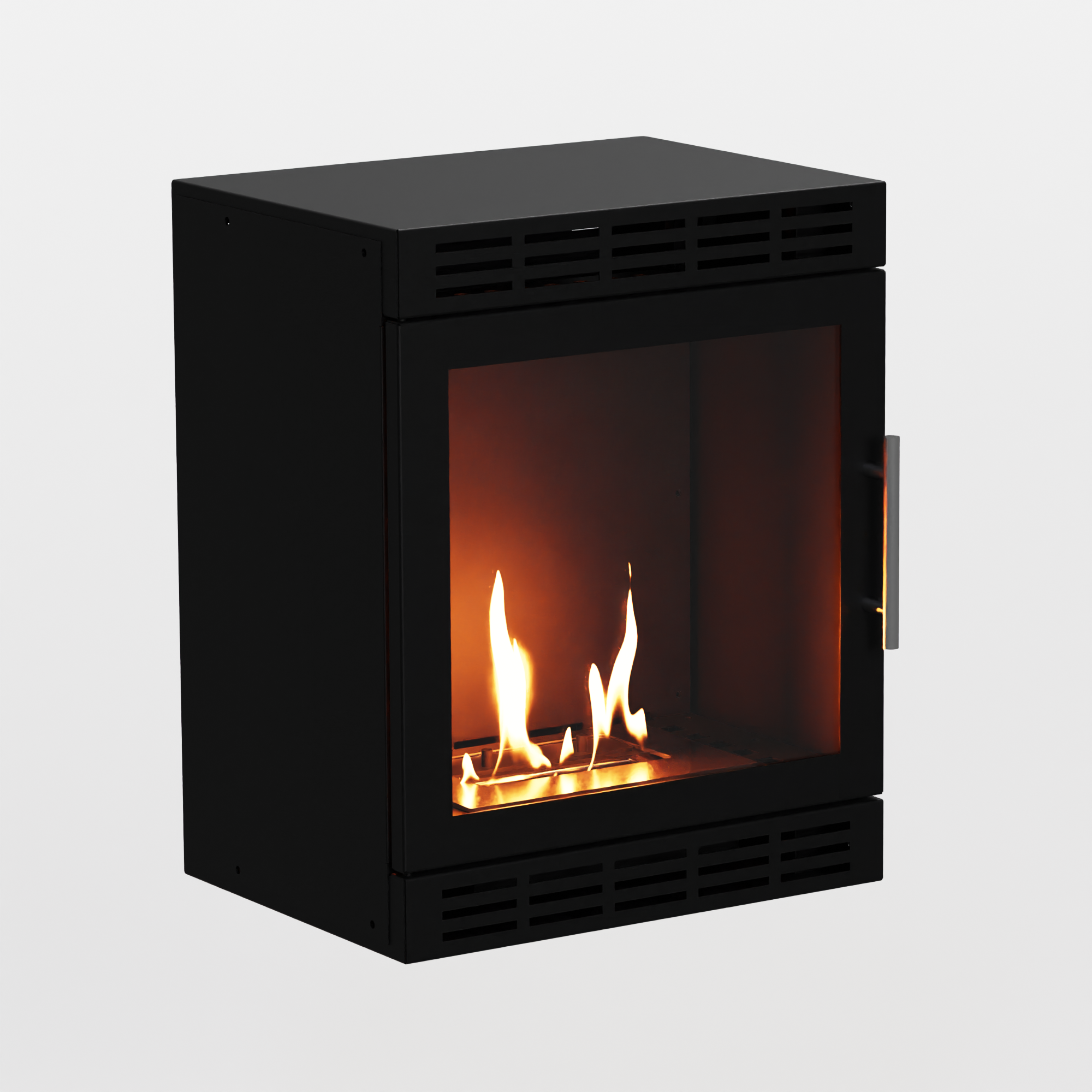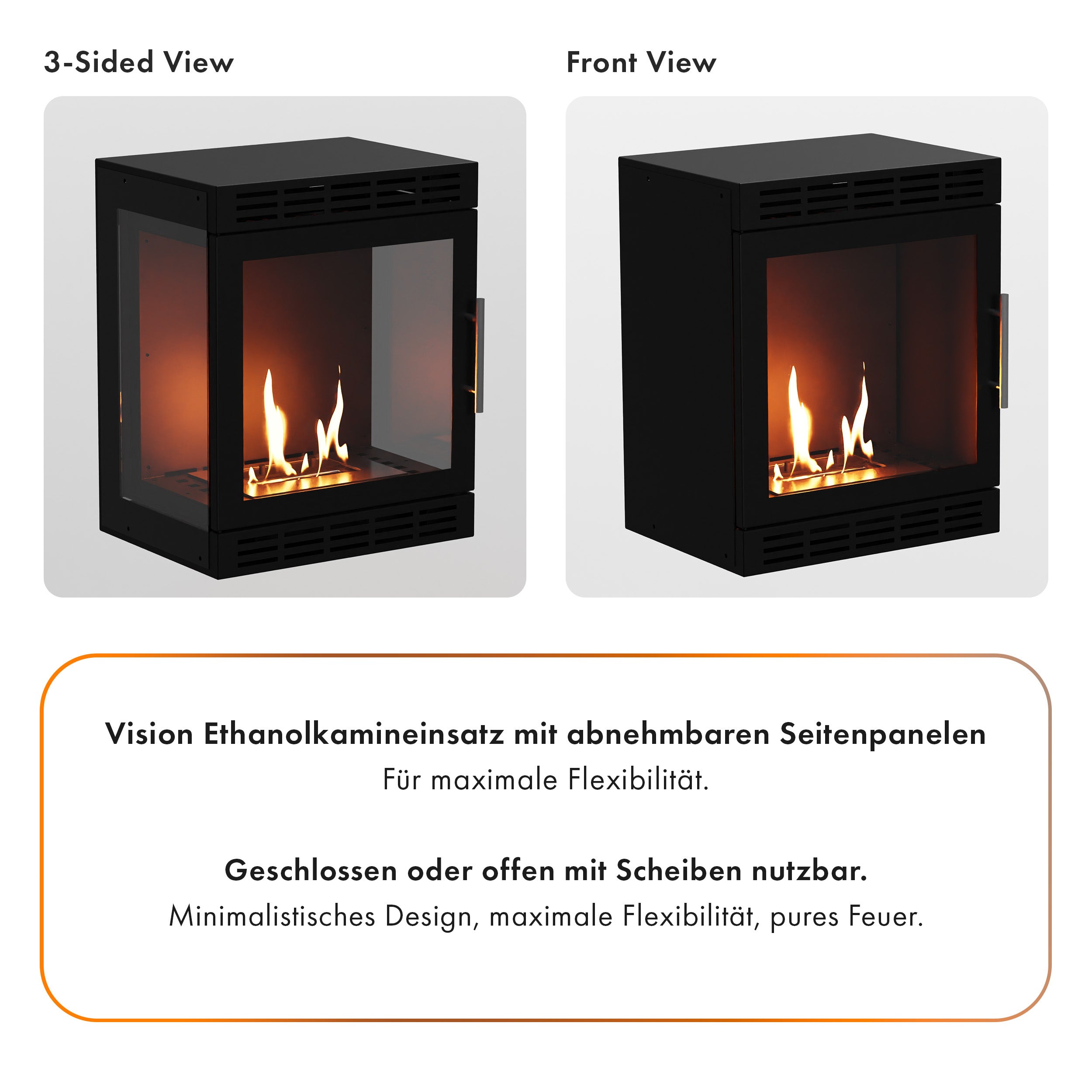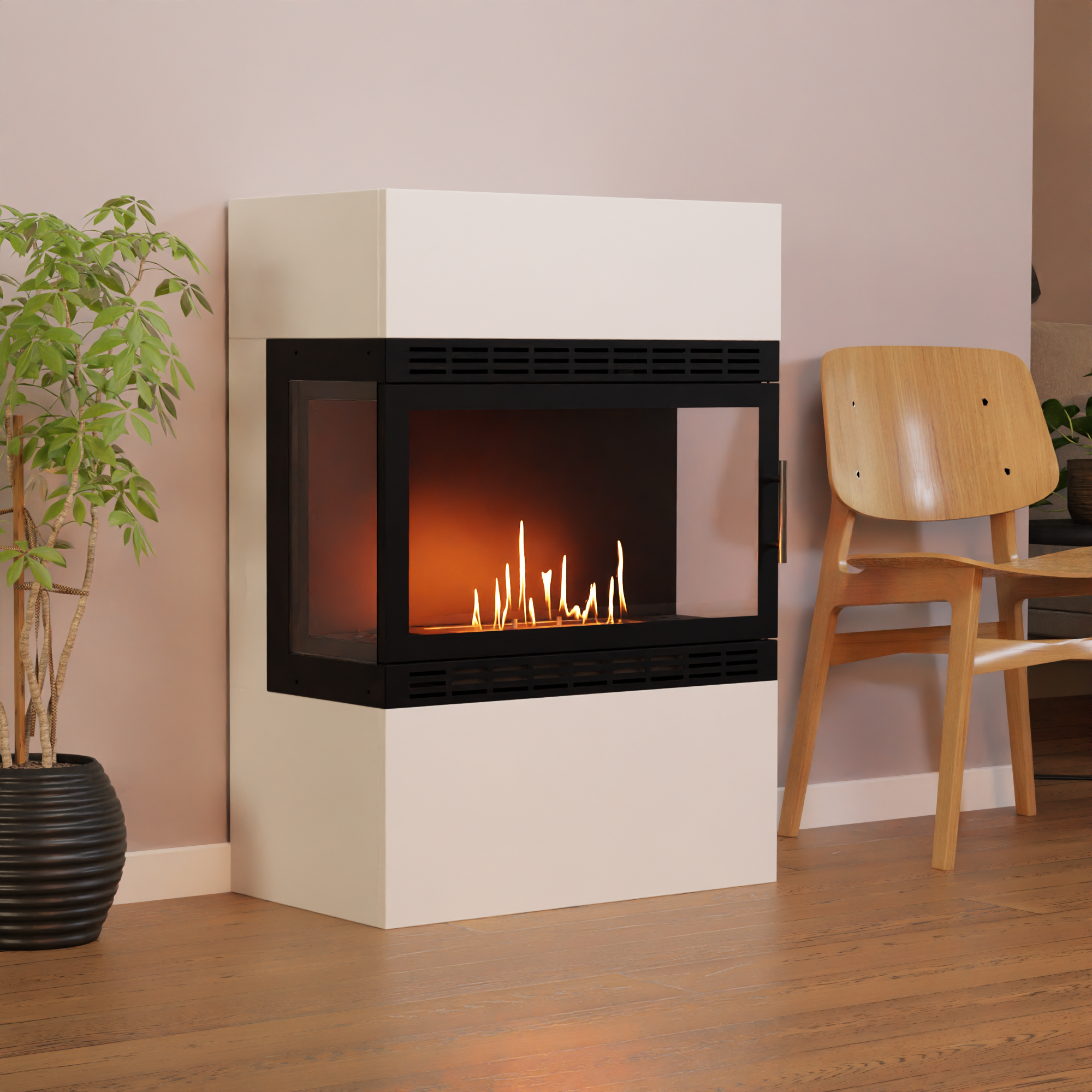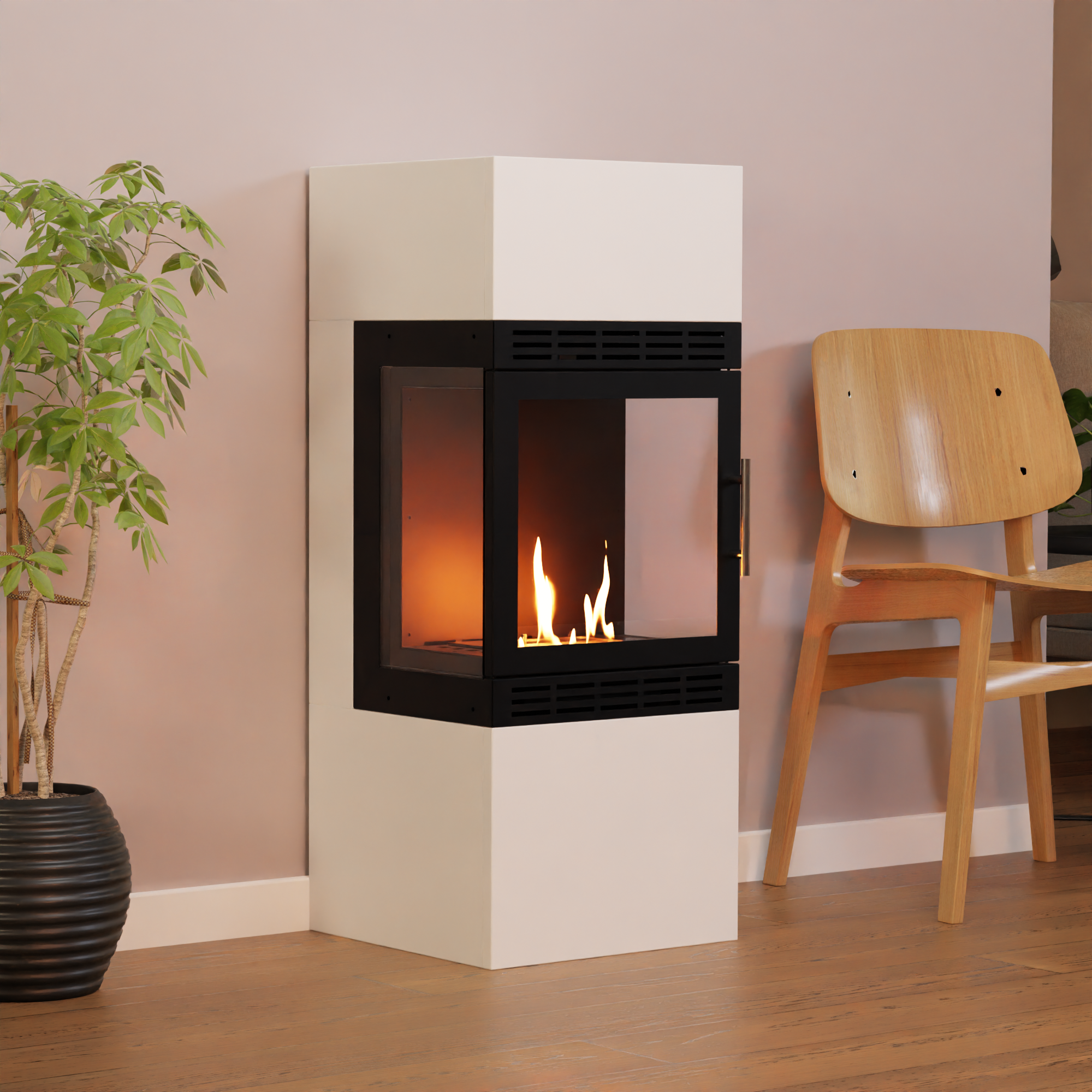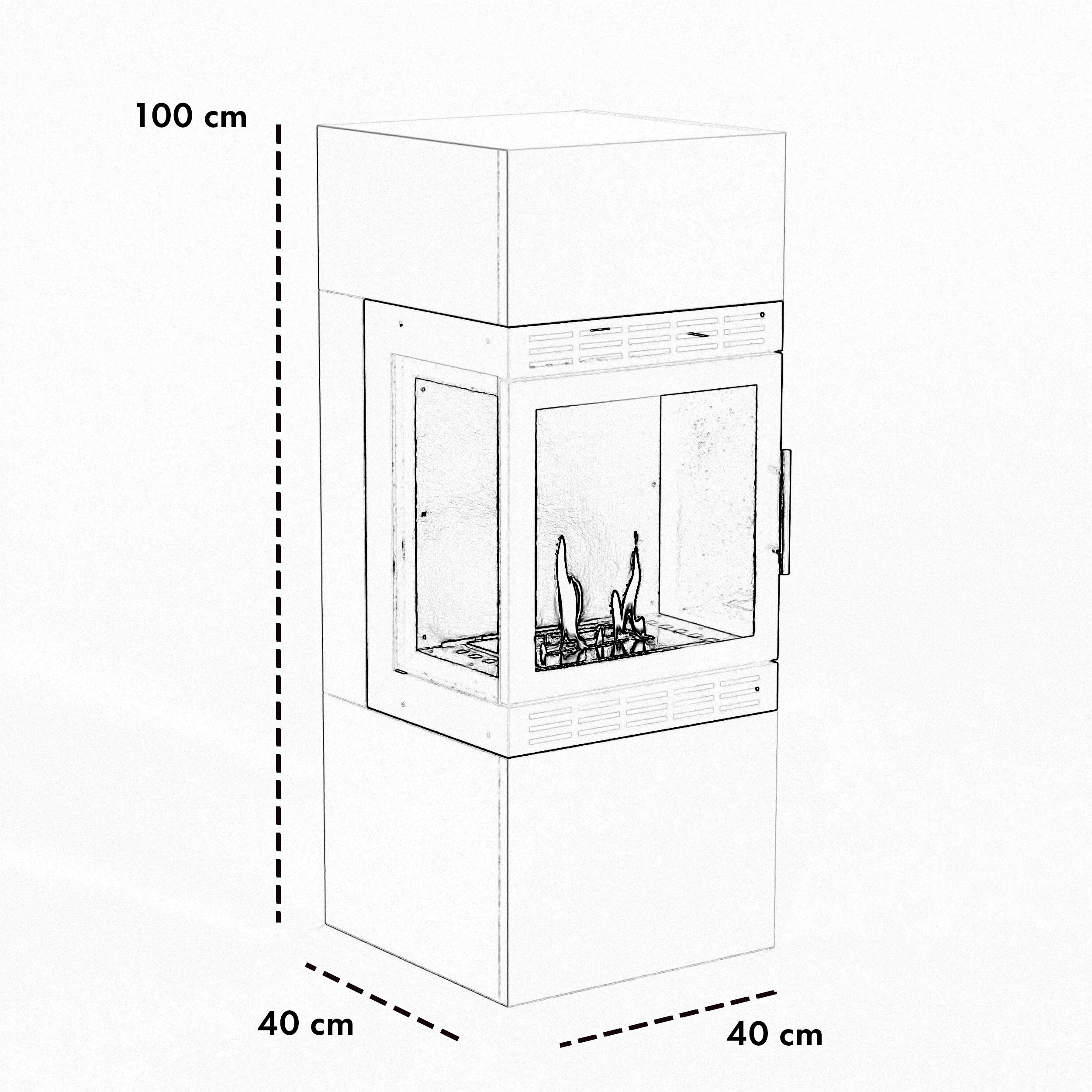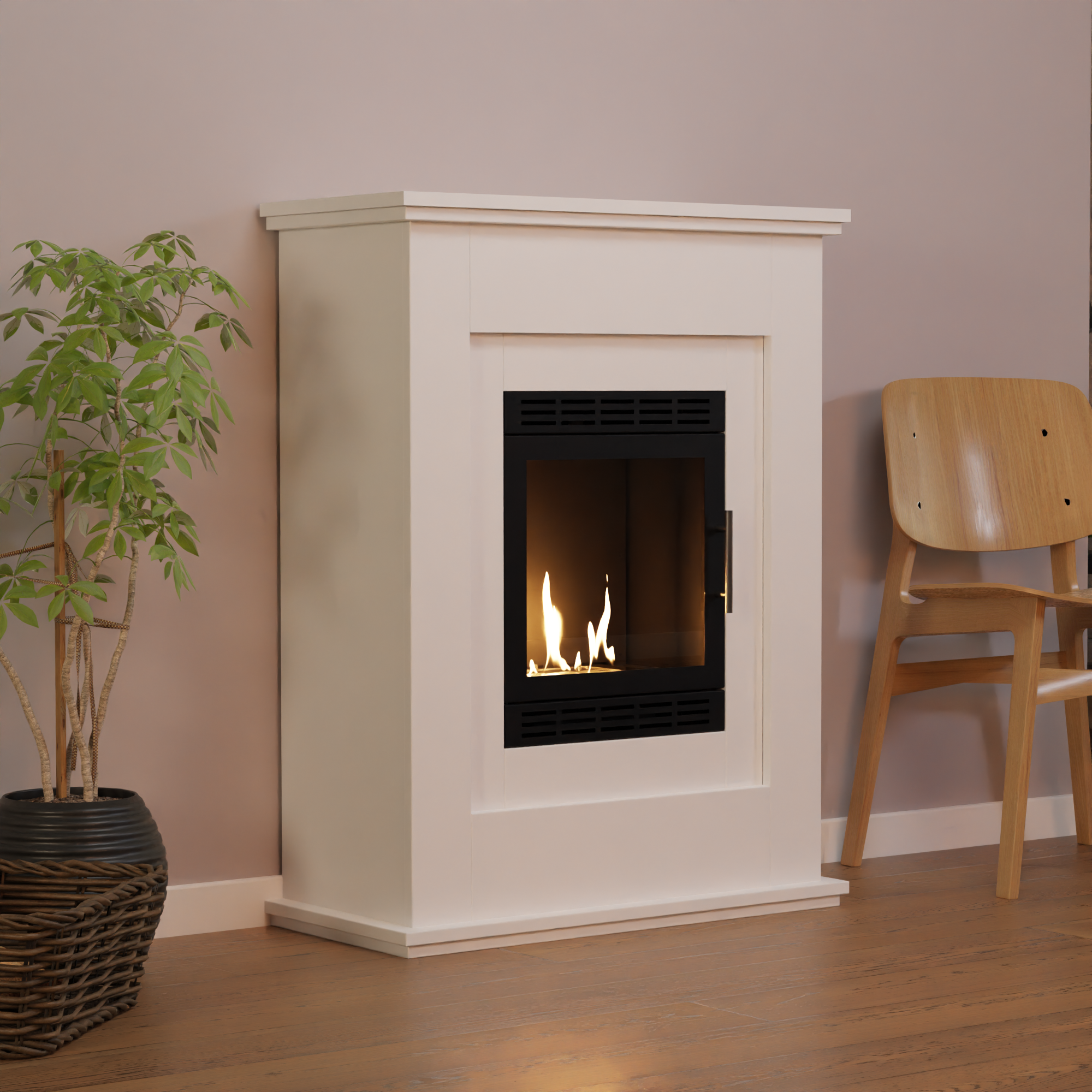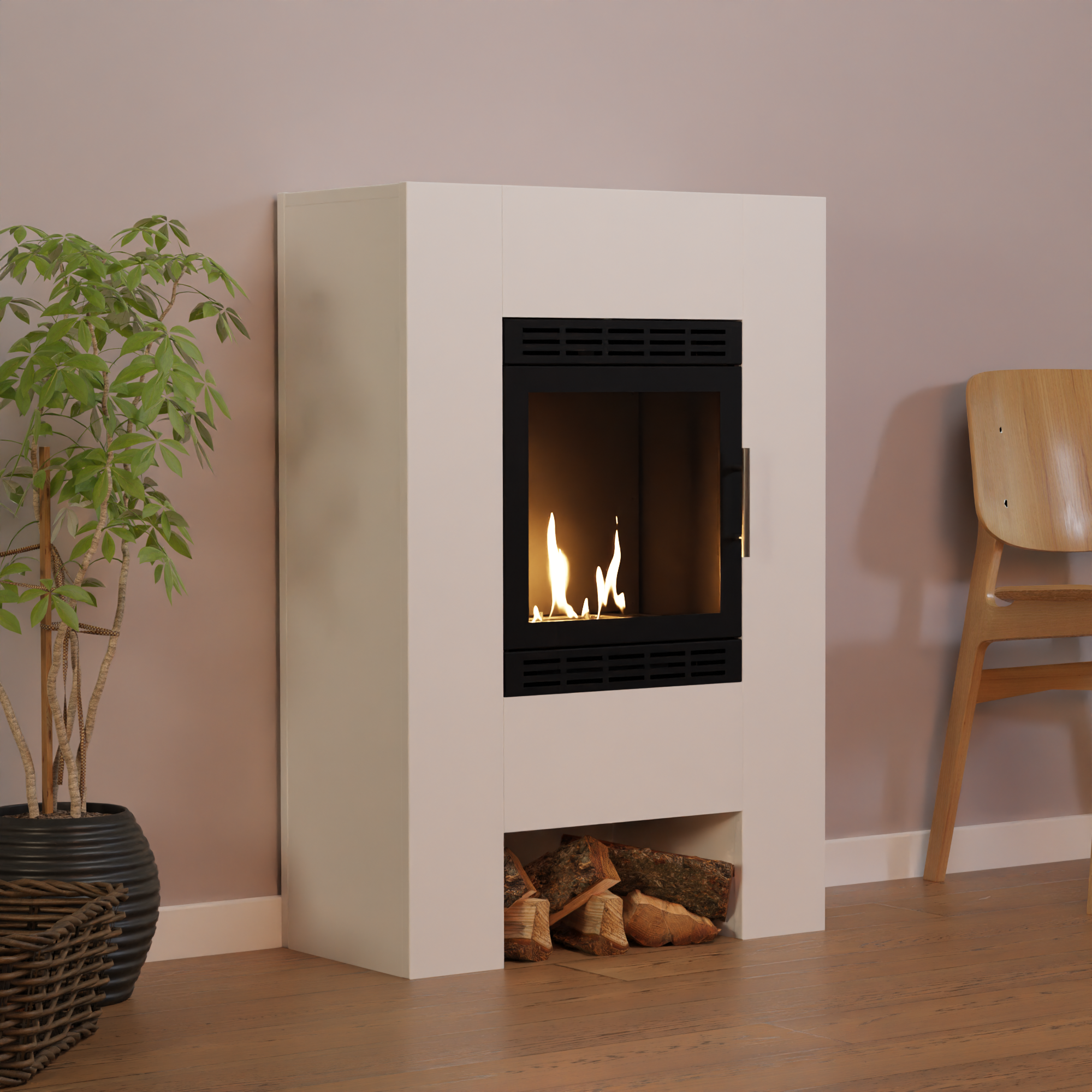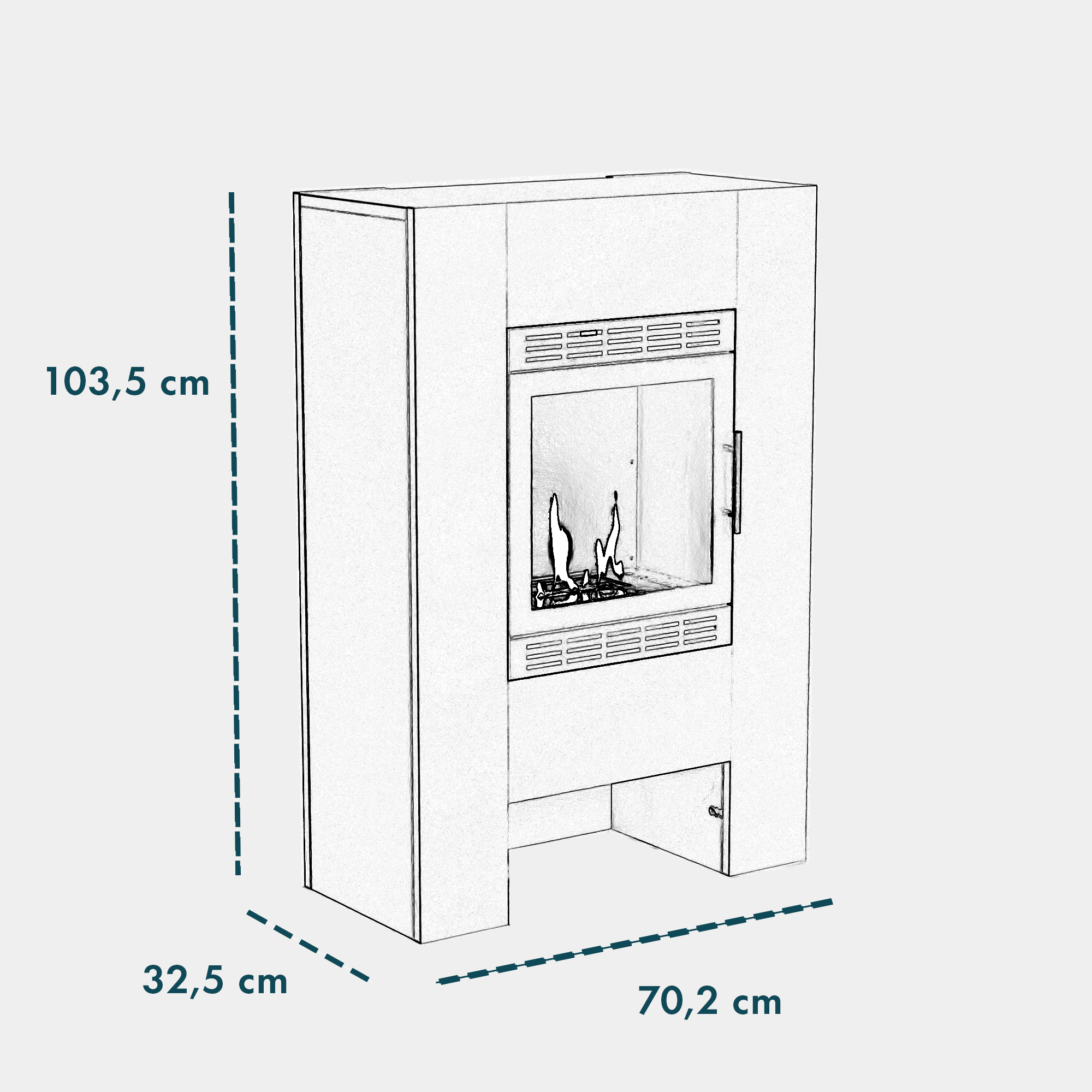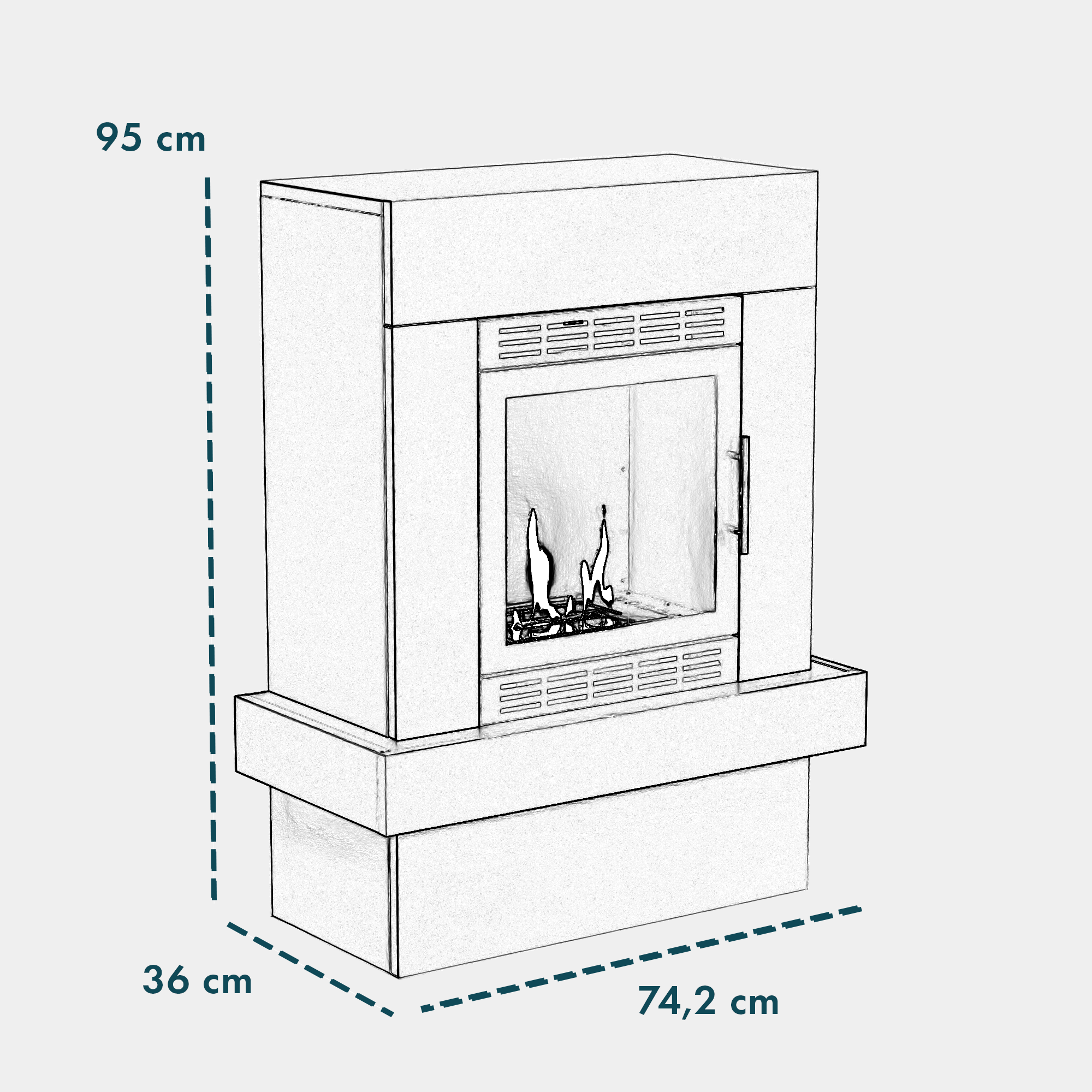Ethanol fireplace
An environmentally friendly alternative to a wood-burning fireplace
Ethanol fireplaces are enjoying growing popularity as an environmentally friendly and flexible alternative to traditional wood-burning fireplaces. They not only offer an attractive way to heat a room but also create a pleasant atmosphere.
Ethanol fireplace
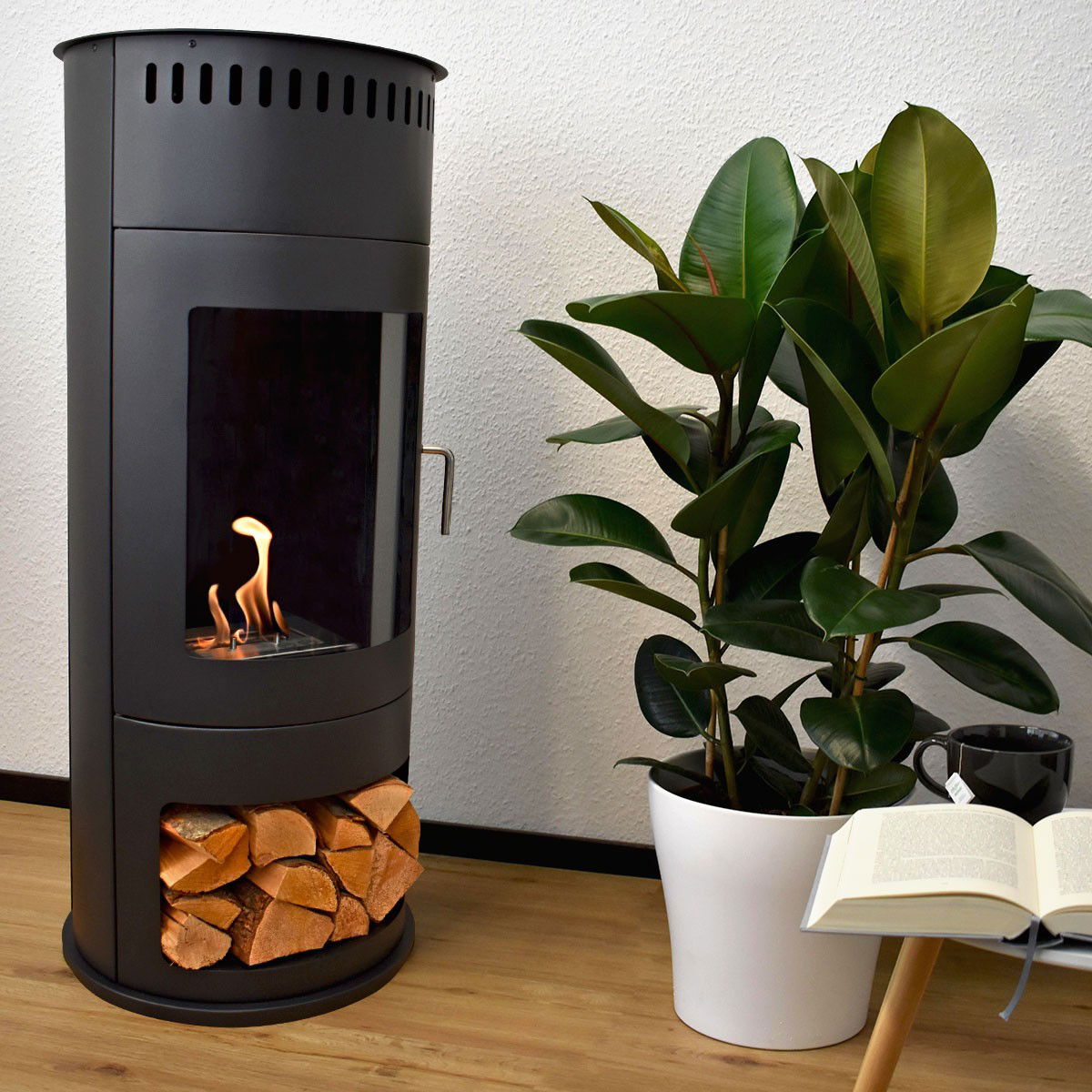
How an ethanol fireplace works
Ethanol fireplaces work in a simple yet effective way. They use ethanol, an alcoholic fuel derived from renewable resources such as sugar cane or corn. This fuel is placed in a special burner in the fireplace. When the ethanol is ignited, a clean flame is created that immediately emits heat and light.
Combustion of ethanol releases only water and carbon dioxide, making the fireplace an environmentally friendly heating option. Since no harmful fumes are produced, ethanol fireplaces are ideal for indoor use, as they don't require additional exhaust ventilation.
Another advantage is the ease of use: the fuel can be easily refilled, although it must be noted that the burner must be completely cooled down to avoid explosion.
The fleece burner is filled with ethanol up to the fill line. The fleece absorbs the ethanol, ensuring safety and preventing the ethanol from escaping the burner in the event of a tipover. Upon ignition, the ethanol evaporates, creating a stable flame. Many modern burners are equipped with an adjustable air supply system that adjusts the flame height and thus optimizes heat output.
Difference between manual ethanol fireplaces and ethanol fireplaces with BEV automatic burners
Manual ethanol fireplaces
Manual ethanol fireplaces offer a charming and flexible solution for heating your space while creating a cozy atmosphere. They operate without electronic controls, making them particularly simple and user-friendly. These fireplaces are available in a variety of designs, from modern to classic styles, and fit effortlessly into any interior.
In manual ethanol fireplaces, the ethanol is poured into the burner by hand. The user ignites the flame manually with a long lighter or a match. The flame height and heat intensity can be adjusted by the amount of ethanol used and the type of air supply.
A key advantage of manual ethanol fireplaces is their independence from electricity. This makes them ideal for use in areas without electricity or for outdoor applications. They are also often more mobile, as they don't require permanent installation.
Despite their simplicity, safety is paramount. Users should ensure the fireplace is operated on a stable, fireproof surface and only store ethanol in suitable containers. Regular maintenance is also important to ensure safety and efficiency.
Ethanol fireplaces with BEV automatic burner
Ethanol fireplaces with BEV (bioethanol combustion) automatic burners are a modern solution for those who want to enjoy the comfort of a fireplace without the typical drawbacks of traditional systems. These innovative burners combine safety, efficiency, and ease of use, making them ideal for use in residential spaces.
The BEV Automatic Burner is characterized by its automatic ignition and shut-off function. The burner detects the temperature and automatically regulates the flame height, ensuring consistent heat output. If overheating occurs, the burner shuts off automatically, providing additional safety. Control is usually via a remote control or app, allowing for convenient adjustment of settings without the user having to go directly to the fireplace.
A key advantage of BEV technology is its optimized combustion, which ensures near-complete energy utilization. This results in high efficiency and minimal emissions, making these fireplaces an environmentally friendly heating solution. Furthermore, these fireplaces require significantly less ethanol refilling, resulting in a longer burn time. The fireplaces are powered by 5-liter canisters of ethanol, allowing for a continuous burn time of up to 72 hours.
Integrated safety features, such as overheat protection and automatic shut-off, make ethanol fireplaces with BEV automatic burners particularly safe to use. The use of high-quality, heat-resistant materials ensures the fireplaces' durability and reliability.
A key advantage of manual ethanol fireplaces is their independence from electricity. This makes them ideal for use in areas without electricity or for outdoor applications. They are also often more mobile, as they don't require permanent installation.
Despite their simplicity, safety is paramount. Users should ensure the fireplace is operated on a stable, fireproof surface and only store ethanol in suitable containers. Regular maintenance is also important to ensure safety and efficiency.
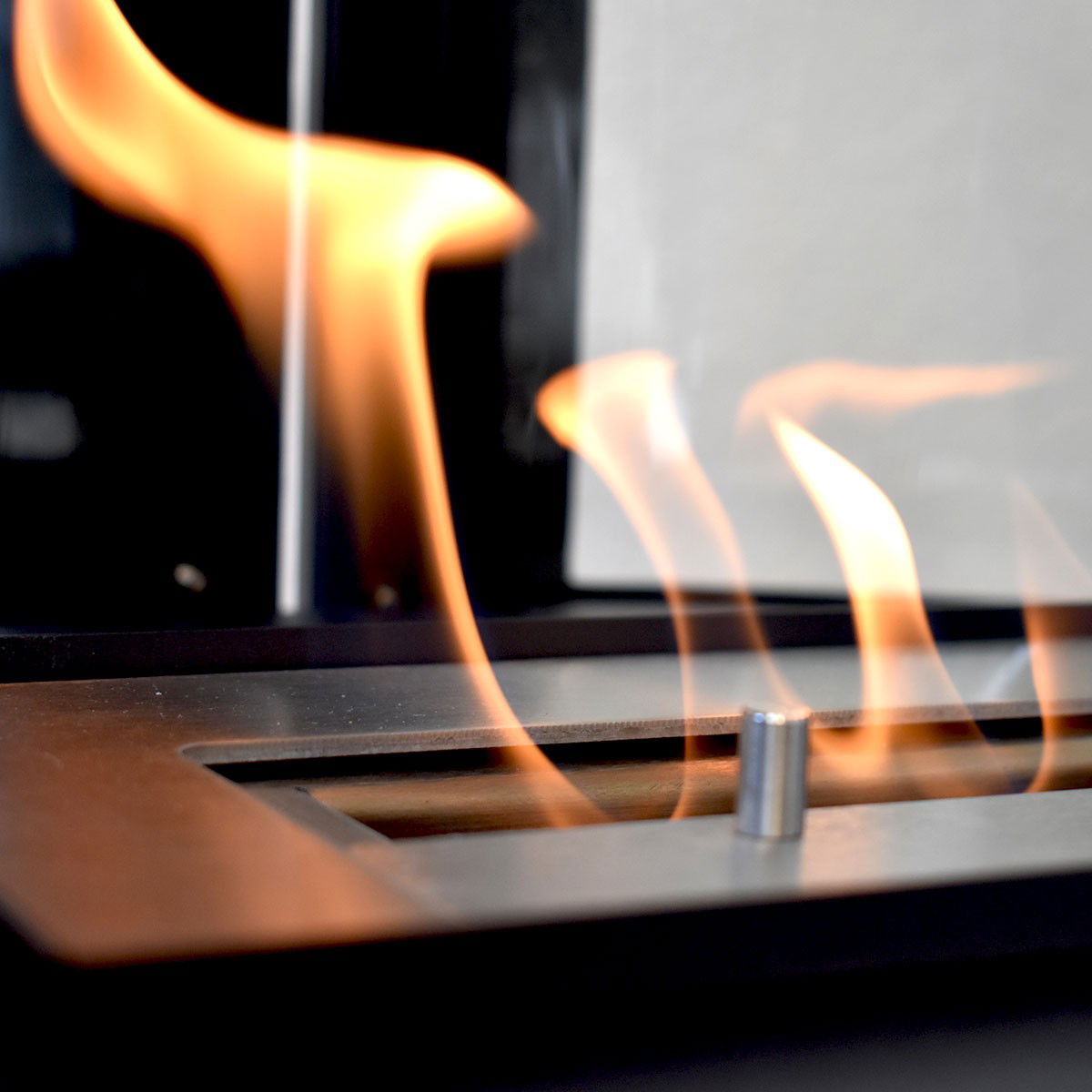
Advantages of ethanol fireplaces
- Easy installation : Ethanol fireplaces are generally easier to install than wood-burning fireplaces because they don't require a complex flue system. Many models are portable and can be placed anywhere in a room.
- Environmentally friendly : Because ethanol comes from renewable sources, ethanol fireplaces are a sustainable option. They help reduce CO2 emissions when used responsibly.
- Versatility : Ethanol fireplaces are available in a variety of designs, from modern to classic. They can be used as both wall-mounted and freestanding fireplaces, making them extremely flexible.
- No wood required : Users don't have to worry about storing and transporting wood. There's also no need to cut or split wood.
- Fast heat : Ethanol fireplaces provide instant heat as the flame burns immediately after lighting, making them ideal for spontaneous use.
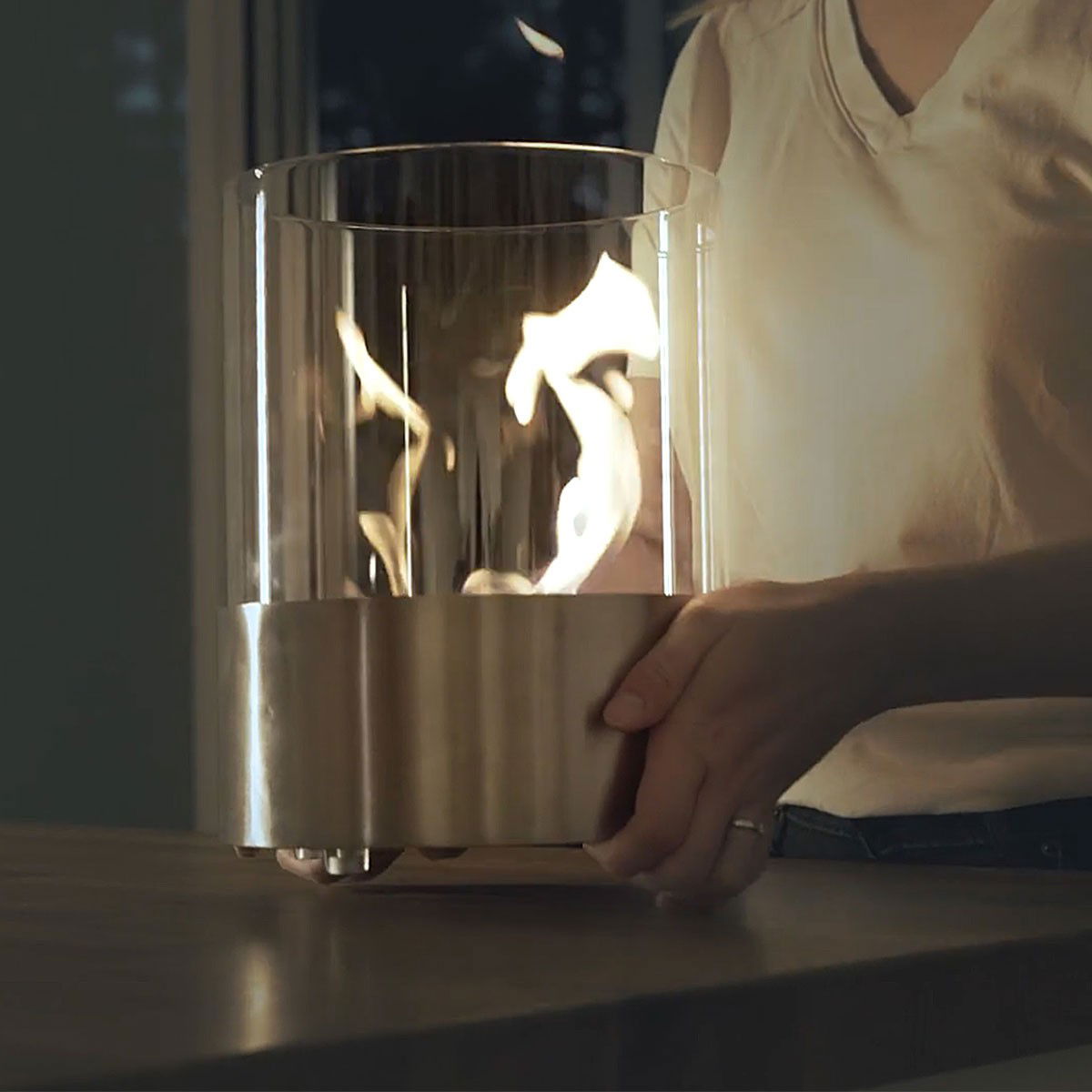
Disadvantages of ethanol fireplaces
Despite their many advantages, ethanol fireplaces also have some disadvantages. Their heat output is typically lower than that of a traditional wood-burning fire, meaning they may not be sufficient to heat larger rooms. Additionally, fuel consumption is higher, and operating costs can add up, especially with frequent use.
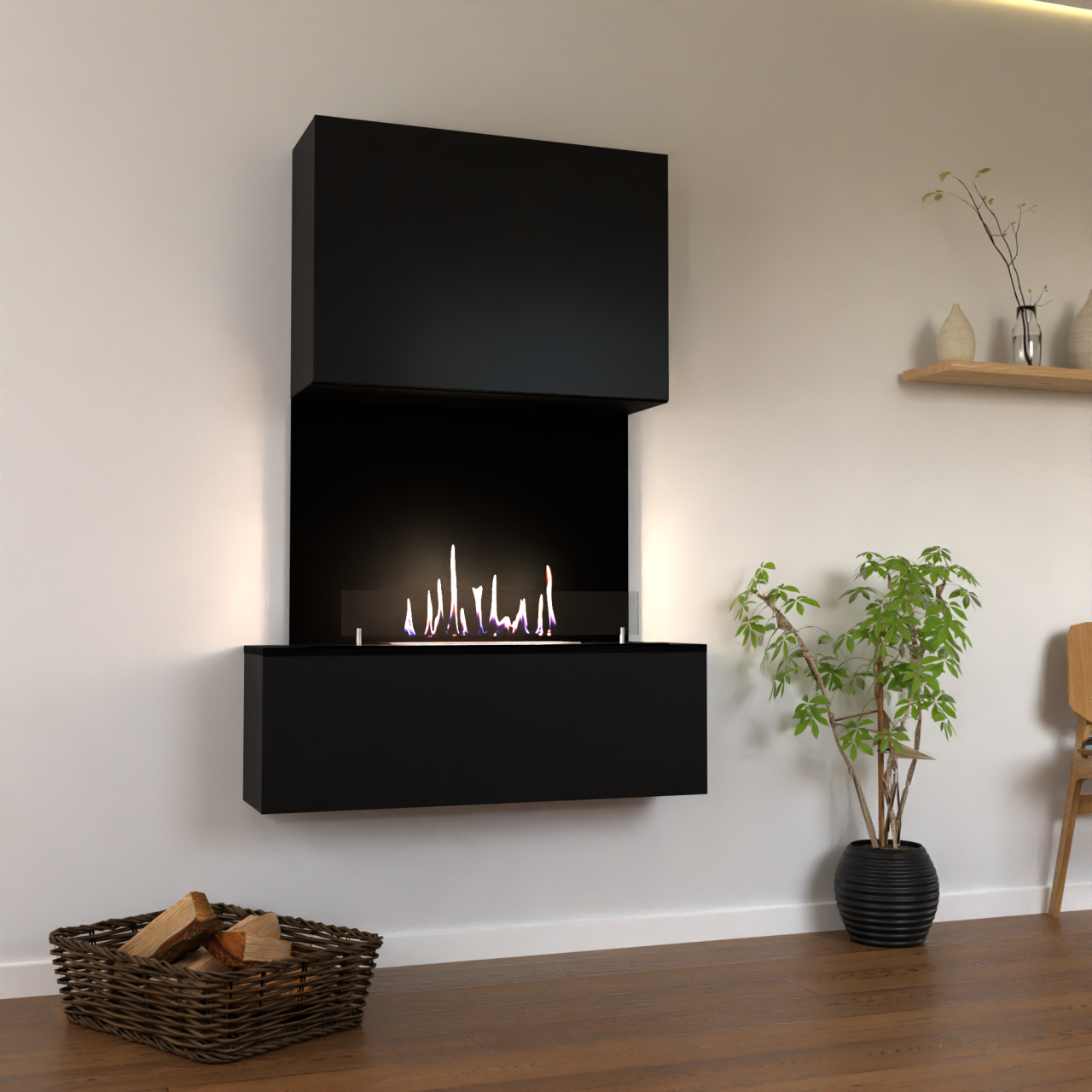
Ethanol fireplaces are growing in popularity because they offer an environmentally friendly alternative to conventional fireplaces and don't require a chimney. They burn bioethanol, a liquid alcohol produced from renewable resources such as grain or sugar cane. But what about the heat output of these modern fireplaces?
1. Combustion process and heat generation
Ethanol fireplaces generate heat by burning bioethanol, producing a relatively clean and odorless flame. Burning one liter of bioethanol releases approximately 6-7 kWh of heat. This amount of energy is roughly equivalent to what electric or gas heaters can produce in one hour.
However, the heat output of an ethanol fireplace is lower than that of a traditional wood-burning fireplace. Combustion temperatures are lower, which limits heat output. Ethanol burns efficiently and releases the generated heat directly into the room, eliminating the need for a chimney to vent heat outside. This ensures that almost all of the heat reaches the room.
2. Heating performance compared to conventional heating sources
Ethanol fireplaces typically achieve a heat output of approximately 1.5 to 4 kW, depending on the size of the fireplace and the amount of ethanol burned. Compared to wood-burning stoves, which often have a heat output of over 5 kW, this seems relatively low. Nevertheless, the heat output of an ethanol fireplace is sufficient to provide comfortable warmth in smaller rooms or as additional heating for larger living areas.
Another advantage is the ability to regulate heat output through burning time and fuel consumption. A small fireplace with a fuel consumption of approximately 0.3 liters per hour can comfortably heat a room of approximately 20 m². However, ethanol stoves are not suitable for larger rooms or for continuous use as the primary heating source, as they do not offer consistently high heat output.
3. Factors that influence thermal performance
The heat output of ethanol fireplaces is influenced by several factors:
- Size of the fireplace: Larger models with larger combustion chambers can burn more bioethanol and thus generate more heat.
- Air supply: Adequate ventilation is important to ensure efficient combustion. The fireplace should be operated in well-ventilated rooms to avoid oxygen deprivation.
- Room insulation: In well-insulated rooms, heat can be stored longer and used more effectively.
- Fuel quality: High-quality bioethanol, which is at least 96% pure, ensures clean combustion and maximum heat generation.
4. Areas of application and restrictions
Ethanol fireplaces are ideal for use in apartments or houses where a chimney is not present or where one will be installed later. They offer a quick and easy way to visually enhance living spaces and create a cozy atmosphere. However, they are not suitable as a primary heating source, as their heat output and limited fuel tank are insufficient to heat large rooms for long periods of time.
Oxygen consumption in the room should also be considered, as ethanol fireplaces not only heat the air but also consume oxygen. Regular ventilation is therefore essential.
The heat output of ethanol fireplaces is lower than that of traditional heating methods, but is sufficient to adequately heat smaller rooms or as supplementary heating for specific areas. Their major advantage lies in the flexibility and decorative element they offer, without the structural requirements of a traditional fireplace. For those who appreciate a cozy atmosphere with a real flame and expect moderate heat output, an ethanol fireplace is a good choice.
Safety of ethanol fireplaces
Although they allow for clean combustion, handling open flames and flammable ethanol requires special care.
First, the fireplace should be placed on a stable, fireproof surface, away from flammable materials such as curtains, furniture, or paper. It is advisable never to leave the fireplace burning unattended. The fireplace should be completely cooled before refilling the ethanol container to minimize the risk of flames.
Many modern ethanol burners feature safety features such as overflow protection and automatic shutoffs to provide additional protection. Users should ensure they store ethanol in special, secure containers and never refill it near the fireplace.
Additionally, it's important to follow the manufacturer's instructions carefully and perform regular maintenance to ensure proper functioning of the fireplace. By observing these safety measures, you can safely enjoy the benefits of an ethanol fireplace and create a cozy ambiance.
Conclusion
Ethanol fireplaces represent a modern, environmentally friendly alternative to traditional wood-burning fireplaces. They not only offer an attractive appearance and instant heat, but also flexibility in use. With proper care, they can be an excellent choice for anyone who wants to enjoy the coziness of a fire without the disadvantages of wood and its storage.







